Scanxiety, Forever Changed Transforming Ultrasound


Scanxiety, Forever Changed Transforming Ultrasound

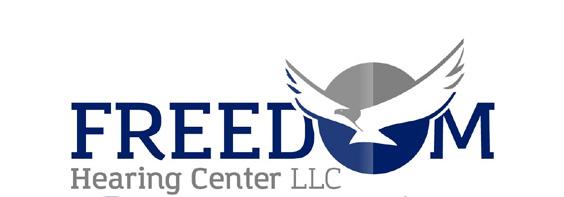


Dr. Larry Bryant – Your Local Certified TeethXpress Provider
Are missing teeth affecting your confidence and quality of life? TeethXpress offers a revolutionary solution for securing a brand-new smile in as little as ONE DAY!
With this advanced dental implant technology, you can enjoy a strong, natural-looking set of teeth without the hassle of traditional dentures.


• Walk Out with a New Smile the Same Day No need to wait months for a full set of teeth! TeethXpress provides a permanent solution in just one visit. Your new teeth are custom-crafted for a natural, comfortable fit.
• Short Healing Time
Unlike traditional implants that may require lengthy recovery, TeethXpress minimizes downtime, allowing you to enjoy the benefits of a fully restored smile quickly.
• A Superior Alternative to Traditional Dentures
Say goodbye to slipping dentures! TeethXpress implants provide stability and comfort, allowing you to eat, speak, and smile with confidence.
• A Worthwhile Investment in Your Health
A beautiful, functional smile enhances both your appearance and overall well-being. TeethXpress is designed to improve not only your confidence but also your ability to enjoy everyday activities without worry.

As a certified TeethXpress provider, Dr. Bryant and his team at Bryant OMS Associates specialize in helping patients achieve a lasting, healthy smile. With expertise in full-mouth implant procedures, Dr. Bryant ensures every patient receives a personalized treatment plan tailored to their unique dental needs.
Take the First Step Toward a Confident Smile! Schedule a consultation today to find out if TeethXpress is the right solution for you.


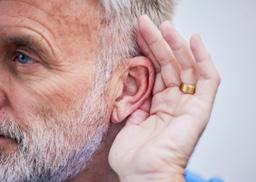




18 TRANSFORMING ULTRASOUND
In the dynamic world of medical technology, few advancements.
20 FREEDOM HEARING CENTER
Hearing loss is often called the invisible disability — unseen but deeply felt.
28 IT’S OK, NOT TO BE OK
Across Maryland — from the semi-rural city of Hagerstown, through the bustling.
34 THE DRY EYE CENTER
Many people don’t realize how debilitating dry eye can be.
40
DO I NEED A PERSONAL TRAINER
In today’s health-conscious society, many individuals are faced with the question.
42 FOREVER FIT MOMS
Her path to health, fitness and self-discovery was a deeply personal one.

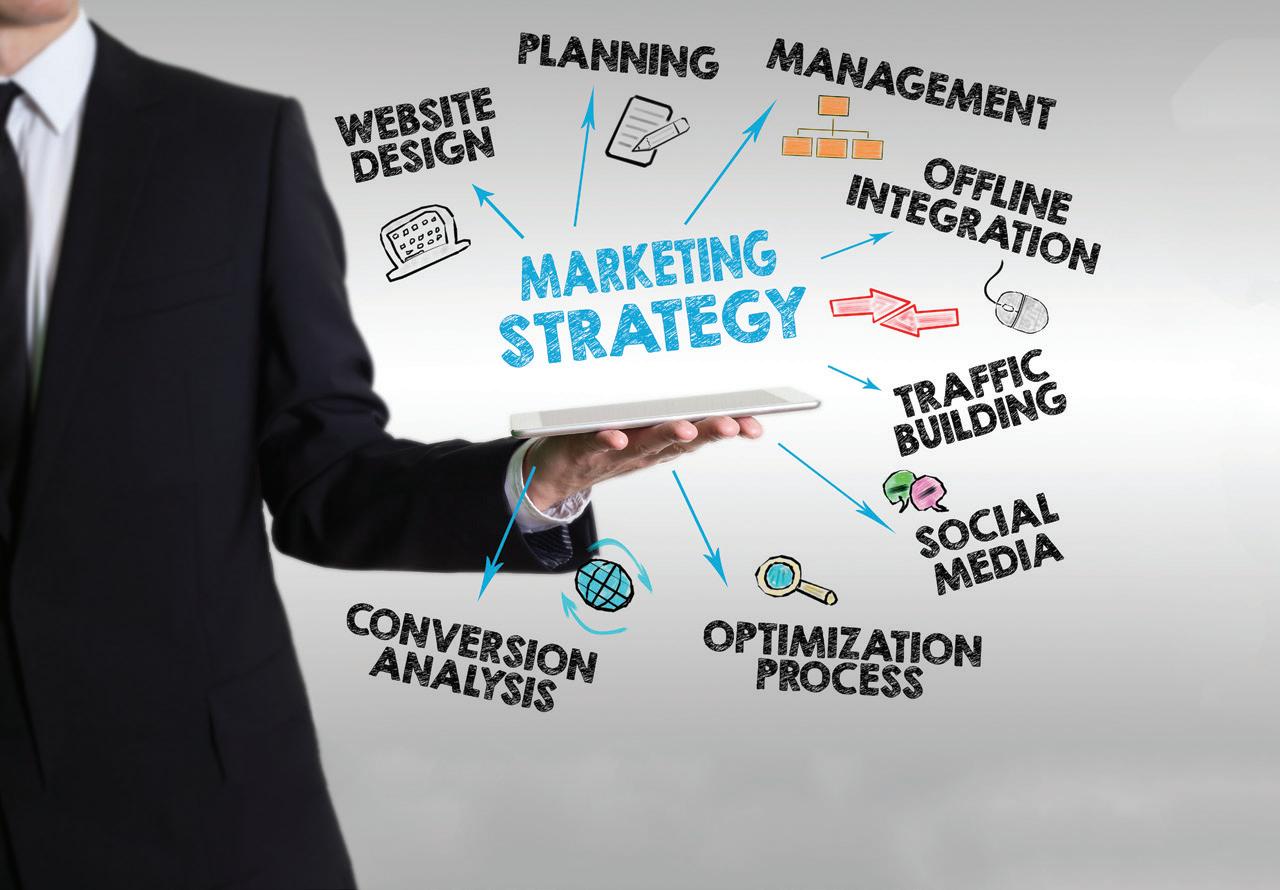



In our latest issue, we delve into a pressing concern that affects every American: the state of our food supply system. The feature article, «Our Food is Killing Us,» sheds light on a sobering reality—Americans currently hold the dubious title of having the highest obesity rates in the world. But this statistic is just the tip of the iceberg. The convenience of fast food has woven itself into the fabric of our daily lives. For many, a quick drive-thru meal has become the norm, overshadowing the importance of nutrition. This reliance on processed, chemically-laden foods raises serious questions about what we are truly putting into our bodies. The alarming truth is that many of the ingredients in our meals are not just unrecognizable; they are potentially harmful.
Take, for instance, the ongoing debate surrounding food additives. While some countries have taken the proactive step of banning certain chemicals—like red dye—Americans remain largely uninformed about the contents of their diets. The label “organic” has become a marketing tool that often fails to guarantee the purity we assume it provides. Many consumers believe they are making healthier choices, only to discover that they are still exposed to harmful substances found in conventional farming practices and food production.
One of the most concerning aspects of our food system is the role of the Food and Drug Administration (FDA). Many people trust that the FDA acts as a vigilant guardian over our food supply. However, this trust is misplaced. The FDA operates with numerous loopholes that allow food companies to include additives that can be detrimental to our health. The drive for profit often takes precedence over consumer safety, leaving many of us vulnerable to the adverse effects of poor dietary choices.
Cancer rates, have been climbing, and researchers are increasingly linking this rise to the chemicals present in our food. It’s a disturbing reality that our daily meals, which should nourish us, may instead contribute to life-threatening conditions. The connection between diet and health has never been clearer, yet many remain unaware of the dangers lurking on their plates.
As we reflect on these issues, it becomes imperative for us to educate ourselves about the food we consume. Awareness is the first step toward change. We must advocate for better practices in food production, demand transparency from manufacturers, and oversight from government agencies.

It’s time to prioritize health over convenience and profit.
«Our Food is Killing Us» is not just a headline; it’s a call to action for each of us. By taking control of our food choices and holding the industry accountable, we can pave the way for a healthier future. Let’s engage in this conversation and make informed decisions that will benefit our bodies and our communities. The time for change is now.
Sincerely,
R odney Folma R

Publisher Rodney Folmar, Sr.
Editor in Chief
Melissa Shelby
Content Creator Daine Taylor
Writers
Wendy Begay, Julia Fischer, Barbara Forman, Darla Frisk, Daine Taylor, Carolyn Tolbert, Rodney Folmar, Sr., Jasmine Wheeler
Advertising & Digital Sales
Will Summer Greg Baily
Graphic Design
William Hodges
Susan Holgram
Distribution Kathy Wilson
Photography Shots By Diamm Ron White
Anthony G. Gallegos Gill Associates Photography
Contact us contact@gmfmediagroup.com 301-889-9580
hwfmg healthwellnessfitnessmag healthwellnessfitness
HEALTH WELLNESS & FITNESS MAGAZINES ARE PUBLISHED BY GMF MEDIA GROUP, LLC. A NEW JERSEY BASED PUBLISHING, ADVERTISING AND MARKETING COMPANY.

The information printed in this magazine has been provided as a public service. Every effort has been made to ensure accuracy; however, the authenticity cannot be guaranteed. All advertisements in this magazine have been furnished by advertisers. Typographic, photographic, and printing errors are unintentional and subject to correction.
The content is not intended to be a substitute for professional medical advice, diagnosis, or treatment. Never disregard professional medical advice, or delay in seeking it, because of something you have read or seen on our web site. Never rely on information on our web site and/or in the magazine in place of professional medical advice.
Dr. Larry Bryant – Your Local Certified TeethXpress Provider
Are missing teeth affecting your confidence and quality of life?
TeethXpress offers a revolutionary solution for securing a brand-new smile in as little as ONE DAY!

Arch Immediate Load Courses with Live Surgical Restorative Demonstration
With this advanced dental implant technology, you can enjoy a strong, natural-looking set of teeth without the hassle of traditional dentures.
• Walk Out with a New Smile the Same Day

No need to wait months for a full set of teeth! TeethXpress provides a permanent solution in just one visit. Your new teeth are customcrafted for a natural, comfortable fit.
• Short Healing Time
Unlike traditional implants that may require lengthy recovery, TeethXpress minimizes downtime, allowing you to enjoy the benefits of a fully restored smile quickly.
• A Superior Alternative to Traditional Dentures
Say goodbye to slipping dentures! TeethXpress implants provide stability and comfort, allowing you to eat, speak, and smile with confidence.
• A Worthwhile Investment in Your Health
A beautiful, functional smile enhances both your appearance and overall well-being. TeethXpress is designed to improve not only your confidence but also your ability to enjoy everyday activities without worry.
| Illuminate Annapolis Mind-BodySpirit-Arts Festival

Free admission, free workshops, cool stuff, good vibes! Under 18 must be accompanied by an adult.
Exhibitors may include aura photography, energy work, crystals, essential oils, vetted intuitive readers including tarot, psychic mediums, jewelry and gift items, free workshops, and much more! Low-cost services. Under 18 must be accompanied by an adult. For details, please go to www.illuminatefestivals.com
Date and Time
Saturday, July 19 10am - 5pm EDT
Location
Anne Arundel Community College Schwartz Student Union 101 College Parkway Arnold, MD 21012

| Men + Mental Health Conference Weekend 2025
Empowering Black Men Through Mental Health Awareness, Connection, and Celebration. Join us for an impactful weekend as GenerationDMV Inc. brings together advocates, professionals, and leaders dedicated to mental health in the DMV area.
Date and Time
May 16 · 4pm - May 17
11pm EDT
Location
Celebrations Venue
4831 Tesla Dr. Suite K Bowie, MD 20715

| Winners Chapel International Maryland Health Fair 2025
Join us at the Winners Chapel International Maryland Health Fair 2025 for a day of wellness, screenings, and resources to keep you healthy. Join us at the Winners Chapel International Maryland-Faith Dome for a day filled with health and wellness activities. Get ready to participate in informative seminars, free health screenings, fitness classes, and more. This event is your opportunity to prioritize your well-being and learn how to live a healthier lifestyle. Don’t miss out on this chance to take control of your health and connect with other members of our community. See you there!
Date and Time
Saturday, April 26 12 - 4pm EDT
Location
Winners Chapel International Maryland-Faith Dome
4825 Glenn Dale Road Bowie, MD 20720

“Gentle Chair Yoga for Older Adults”
Join us for an in person Yoga Class. Poses can be done traditionally or in a chair, as needed.
Yoga can benefit EVERYBODY! This gentle yoga class is geared for older adults and accessible for ALL as positions may be done from a yoga mat, sitting in a chair or standing with a chair/wall for support. Conducted at a slow pace, this class incorporates mindfulness and breathing techniques, while participants learn and practice poses that will increase strength, balance and flexibility. A regular yoga practice can also improve mobility, increase energy, boost physical function, help with pain and enrich your life!

Date and time
Monday, April 28
1 - 1:45pm EDT
Location
Brooke Grove Retirement Village 18131 Slade School Rd Rehab & Nursing Center Sandy Spring, MD 20860
Build Wealth & Wellness: Step Into Your Self-Made Success
Transform your life! Join us for an event to empower professional women to build wellness entrepreneurial success on your terms! Ladies, discover the secrets to achieving financial independence and holistic wellness with a dynamic lineup of speakers and interactive sessions. Whether you’re looking to grow your wealth, improve your health, or both, this event will equip you with the tools and strategies you need to thrive.
Date and time
Saturday, August 2
2 - 3pm EDT
Location Olney, MD 20832
Join us for the highly anticipated return of TMYK Pet Wellness Summit, now in its 3rd year! Join us for the much-anticipated return of the More You Know Pet Wellness Summit, now in its third year! This premier event promises an enriching experience filled with invaluable insights from renowned experts in pet wellness, both from the U.S. and internationally.
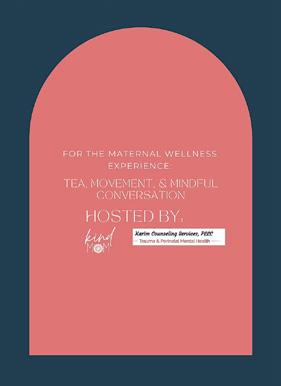
| Maternal Wellness Experience: Tea, Movement & Mindful Conversation
Let’s celebrate Maternal Mental Health Month! We will provide a beautiful, peaceful and informative experience for all maternal seasons!
Take a pause and nourish your soul. This unique event invites mothers to indulge in seasonal Ayurvedic teas, move through restorative yoga and breathwork, and connect deeply during an open dialogue about maternal mental health. It’s your time to unwind and cultivate self-care.
Date and Time
Saturday, May 31 10:30am - 1pm EDT
Location
Premier Birth Center Chantilly 4200A Technology Court Chantilly, VA 20151
Date & Time
Saturday, July 12 9am - 6pm EDT
Location
Legacy Hall 4301 New Town Avenue Williamsburg, VA 23188
| WellFest 2025 - Mind Body Planet 5K
Come join us at Riverfront Park Fredericksburg for the WellFest 2025 - Mind Body Planet 5K charity run! Lace up your sneakers and get ready to run or walk through scenic trails while connecting with nature and promoting a healthy lifestyle.
Whether you’re a seasoned runner or just starting out, this event is perfect for all fitness levels. Enjoy the fresh air, challenge yourself, and meet like-minded individuals who share your passion for well-being.
Date & Time Saturday, May 24 8 - 9:15am EDT
Location
Riverfront Park Fredericksburg 701 Sophia Street Fredericksburg, VA 22401

| Energy Reset Retreat: Relax, Refuel, Recharge
Join Strategist, Executive Leadership Coach, Author, and Equine-assisted Learning Specialist
Shari J Goodwin as she shares some of her top techniques to re-ground, release stress, cleanse your energy, and open to fresh possibilities. In this very special morning retreat, we’ll partner with nature at the wetland and with the horses to re-discover your inner wisdom and lay the foundation for more peace.


POSTURE STRETCHES WORKSHOP
Posture is like a window into the spine. In this interactive workshop you will learn different stretches to help support healthy posture. Free and open to the community.
Date and time
Tuesday, April 22 5:30 - 6:30pm EDT
Location
Wave of Life Chiropractic 4640 Shore Drive #108 Virginia Beach, VA 23455

Date and Time
Saturday, May 3 9am - 12pm EDT
Location Cobbler Corner Farm 10539 Ramey Road Marshall, VA 20115
Dr. Jeremy Walston, a noted figure in geriatric medicine at Johns Hopkins Medicine, has received the 2025 Lifetime Achievement Award by the International Conference on Frailty & Sarcopenia Research (ICFSR). The prestigious award, to be presented at the 15th annual ICFSR meeting in Toulouse, France, recognizes his transformative contributions to understanding the biological mechanisms behind aging and frailty.
As the Raymond and Anna Lublin Professor of Geriatric Medicine and Gerontology, Dr. Walston has spent countless hours unraveling the complexities of aging and developing practical tools for clinical assessment. His groundbreaking work bridges the gap between laboratory research and patient care, focusing particularly on the intersection of frailty, resilience, and mitochondrial biology.
Under his leadership, the Johns Hopkins Human Aging Project (HAP) has emerged as a national leader in translating scientific advances into clinical breakthroughs. The project, launched in 2021, represents a unique collaborative approach to aging research, bringing together experts from diverse fields including medicine, engineering, and nursing to tackle the challenges of healthy aging.
Dr. Walston’s impact extends far beyond his research laboratory. As the deputy director of the Division of Geriatric Medicine and Gerontology, he has been instrumental in developing interdisciplinary research programs that focus on understanding why some people age more successfully than others. His work has helped establish new frameworks for assessing and treating frailty in older adults, leading to improved patient care protocols across the medical community.
The ICFSR Lifetime Achievement Award specifically acknowledges Dr. Walston’s pivotal contributions to understanding the biological basis for frailty syndrome, a condition that affects millions of older adults worldwide. His research has not only advanced our scientific understanding of aging but has also provided practical tools that healthcare providers can use to identify and treat frailty in clinical settings.
“The aging process remains one of medicine’s most complex mysteries,” Dr. Walston often reminds his colleagues. Through his leadership of the Biology of Healthy Aging program, he continues to inspire the next generation of researchers while searching for answers to basic questions about how we age and how we can age more gracefully and effectively.
This international recognition comes at a time when aging research has never been more critical, with global populations living longer than ever before. Dr. Walston’s work reminds us that the goal isn’t just to extend lifespan, but to ensure those additional years are lived with health and vitality.

In the ongoing battle against cancer disparities, one Maryland researcher stands head and shoulders above the rest. Dr. Cheryl Knott, recently honored as the University of Maryland School of Public Health’s prime example of research excellence. In no uncertain terms, she is in the process of revolutionizing our understanding of how social factors shape cancer outcomes in underserved communities.
As an MPower Professor and associate director of Community Outreach and Engagement at the University of Maryland Greenebaum Comprehensive Cancer Center in Baltimore, Dr. Knott has dedicated her career to a vital mission: uncovering and addressing the root causes of cancer disparities. Her innovative and groundbreaking research has revealed how neighborhood characteristics, including racial diversity and income levels, directly contribute to cancer inequities.
What sets Dr. Knott’s work apart is her all-encompassing approach to understanding cancer disparities. With over twenty years of experience in community-based cancer control research, she examines these challenges through multiple lenses – from individual behaviors to systemic barriers. Her current research, supported by the National Institutes of Health, breaks new ground by investigating how structural racism perpetuates cancer disparities, while her American Cancer Society-funded work explores the complex interplay of individual, interpersonal, and neighborhood-level factors that disproportionately affect African American communities.
Dr. Knott’s innovative social epidemiology research particularly focuses on cancer control behaviors in African American communities, making her work particularly relevant for Maryland’s diverse population. Through her leadership at the Greenebaum Comprehensive Cancer Center, she’s building bridges between academic research and community action, ensuring that scientific discoveries translate into real-world solutions.
Her recognition as a research excellence honoree isn’t just an academic accolade – it’s a testament to the power of combining rigorous scientific inquiry with genuine community engagement. As Maryland continues to lead the way in health equity research, Dr. Knott’s work reminds us that the path to eliminating cancer disparities requires both scientific innovation and a deep commitment to understanding the communities served.



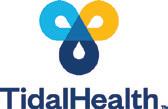


By Wendy Begay

Most customers don’t know they’re eating a healthier dessert when they bite into one of MidnighTreats’ delectable cookies, but the newly opened College Park, MD, destination offers plant-based treats crafted with a nutritional mindset. MidnighTreats sells both “Monster” cookies that are each one-third of a pound, as well as single-serving “Munchies” that are more regular-sized cookies. Each one uses only vegan-friendly ingredients, with less sugar than competitors. Not that you could ever tell from the tasty innovative flavors, like Kitchen Sink (vegan chocolate candies, pretzels, caramel and potato chips); Super Snickerdoodle (cookie butter and Biscoff cookie); and Cookies n’ Cream (Oreo bits and white chocolate chips). The College Park location is the second MidnighTreats franchise for owner Jordan Rutland, who co-owns the Alexandria, VA, location with Tracey Mack. “I’ve always had a love for baking,” says
Rutland, who opened College Park’s MidnighTreats in February 2025 and took over ownership of the Alexandria store last year. “After working at MidnighTreats for a summer, getting to know the owners, and experiencing how good vegan desserts can taste, I couldn’t pass up an opportunity to be a franchisee.” Rutland was the brand’s first franchisee, taking helm of the locations whose origins stem from founder Johnny Nguyen, who started what became MidnighTreats as a cookie company out of his mom’s Vienna, Virginia, kitchen. In addition to four physical locations in the DMV (also in Arlington and Reston, VA), MidnighTreats ships cookies nationwide every week.
The typical menu features six Monster size flavors, with at least two rotating flavors that stay on the menu for 2 weeks at a time. Every week, there’s something different to try.
At College Park, in addition to the cookies, coffee, oat milks and oat milk teas that

visitors to both the Alexandria and College Park locations can enjoy, diners can try oat milk gelato in items like cookie Monster sundaes and Munchie cookie sandwiches.
As the first franchise owner who took the leap from cookie dealer to franchisee, Rutland says the journey to business owner has been incredibly rewarding. College Park’s location close to the University of Maryland campus sees hungry students getting their sweet treat fix through midnight every night, and open until 1 a.m. on Fridays and Saturdays. “The customer response to a Maryland location has definitely been the most rewarding part about opening College Park,” Rutland says. “MidnighTreats started out as a business that was open very late at night. What’s a better location for a cookie shop to have late night hours than near a college campus?”
To learn more about MidnighTreats or order cookies, visit MidnighTreats.com.

DR. SHMUEL SAMUELS’
WBy Dr. Neal
hen Baltimore residents talk about life-changing pain relief, Dr. Shmuel Samuels’ name often comes up. For over three decades, this Pikesville chiropractor has been quietly revolutionizing how people think about chronic pain management. His latest offering? A treatment that sounds more like science fiction but delivers very real results.
“Most people are surprised when I tell them we can treat chronic pain with sound waves,” says Dr. Samuels, founder of Samuels Chiropractic. “But then they experience the results, and their surprise turns to relief.”
The treatment he’s referring to is Stem Wave therapy, or ESWT (Extracorporeal Shock Wave Therapy). It’s an elegant solution that uses precisely targeted sound waves to stimulate the body’s natural healing response. For patients dealing with conditions like plantar fasciitis, tendonitis, or persistent joint pain, this approach offers hope without the need for surgical intervention.
What makes this therapy particularly intriguing is its biological mechanism. The sound waves trigger a cascade of healing responses in the body, including reduced inflammation and the formation of new blood vessels – a process called angiogenesis. Perhaps most remarkably, the treatment recruits the body’s own stem cells to the injured area, promoting natural tissue repair.
“I’ve seen patients who’ve struggled with chronic back pain for years find relief in just a few sessions,” Dr. Samuels explains. “What’s especially appealing is how quick and straightforward the treatments are – typically just 5 to 10 minutes each.”
The therapy’s versatility is impressive. Beyond treating common ailments like back and neck pain, it’s proven effective for sports injuries and even bone degeneration. For athletes and weekend warriors alike, this means faster recovery times and a reduced risk of recurring injuries.
But what truly sets this treatment apart is its non-invasive nature. In an era where surgical solutions often seem like the default option, Stem Wave therapy offers an alternative that doesn’t require incisions, medication, or lengthy recovery periods. The body does most of the work – the sound waves simply provide the stimulus needed to accelerate natural healing processes.
Dr. Samuels’ approach reflects a broader shift in healthcare – one that emphasizes working with the body’s inherent healing capa-
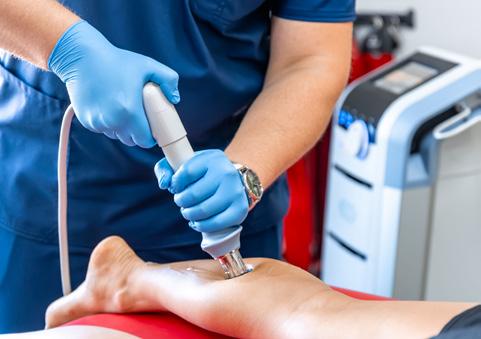
bilities rather than against them. “After 30 years of practice, I’ve learned that the most effective treatments are often those that enhance what the body already knows how to do,” he reflects.
For Baltimore residents seeking solutions to chronic pain, this innovative therapy represents more than just another treatment option – it’s a chance to reclaim their quality of life without resorting to more invasive measures. And in Dr. Samuels, they find not just a practitioner, but a pioneer committed to bringing advanced, natural healing solutions to his community.
| 2025 “Jog N’ Jam”| Mental Health Run
Join us for a run with scenic routes and feel-good activities for people of all ages. Choose between a 2.5K 5K or 10K to walk or run, and bring in the positive vibes with live music, food trucks and wellness activities!
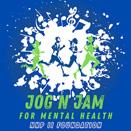
Date & Time
Sunday, May 18 · 8am - 12pm EDT
Location Fletchers Cove 4940 Canal Rd NW Washington, DC 20007
| Open House Reception with Free Energy Sessions at Wellness Center
Enjoy a free food reception and experience a form of bio-energy. Many find the wellness sessions revitalizing, rejuvenating, and calming. The energy sessions consist of a practitioner radiating energy from the palm of the hand pointed in the direction of the receiver who sits quietly in a chair one foot away. The sessions are usually between 10 and 50 minutes. Sukyo Mahikari has centers in most major cities and over 75 countries.
Date & Time
Saturday, April 19 2 - 4pm EDT
Location
Sukyo Mahikari Center 4479 Connecticut Ave Washington, DC 20008
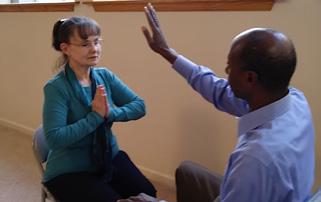

The American Heart Association is proud to announce a historic milestone in its mission to double survival rates from cardiac arrest by 2030 and create a world of longer, healthier lives: the signing of the HEARTS Act.
With over 20 million extractions performed annually in the United States, this common dental procedure addresses a wide range of issues, from impacted wisdom teeth to making space for orthodontic treatment. Understanding the necessity of extractions, the risks of delaying treatment, and the available replacement options can empower patients to make informed decisions about their dental health.
Tooth extractions are typically considered a last resort when other treatments, such as fillings or root canals, are no longer viable. In many cases, extractions become necessary due to severe tooth decay that extends too deep to be repaired, leaving the tooth non-restorable.
“Part of our job as dentists is to help you preserve your teeth as long as possible. But sometimes, teeth are just so badly broken down that they are non-restorable, and the only option is to remove them,” said Dr. Edward H. Chappelle, Jr., DDS, of Your Bowie Dentist.
“Tooth extractions are often the result of cumulative issues—neglect over time, large fillings weakening the tooth, or untreated gum disease leading to bone loss,” said Chappelle.
Maintaining good oral health is essential for overall well-being, affecting everything from your smile to your sleep. Yet, despite best efforts, some teeth may become too damaged or decayed to save, making extraction necessary. Whether due to severe decay, gum disease, or accidental trauma, losing a tooth can have lasting effects on both function and appearance.
Trauma, including cracked or fractured teeth, can also necessitate extractions, particularly in cases of vertical fractures that compromise the entire tooth structure. Additionally, some patients undergo extractions for orthodontic purposes to create space for proper tooth alignment and bite correction.
While tooth loss can affect individuals of all ages, older adults are more likely to experience extractions due to the cumulative effects of wear, decay, and gum disease over time.
Socioeconomic factors also play a significant role, as access to dental care can influence the likelihood of preventive treatments and the need for extractions. Without early intervention and routine dental care, the risk of tooth loss increases, making extractions more common among underserved populations.
The tooth extraction procedure typically begins with local anesthesia, ensuring a pain-free experience. In more complex cases, such as impacted or fractured teeth, surgical extractions may be necessary.
“Recovery from an extraction depends on the difficulty of the procedure, but generally, within a couple of days, most people feel back to normal, with gums typically healing in six to eight weeks, though full bone regeneration can take several months,” said Chappelle.
When it comes to replacing a missing tooth, several options are available. Dental implants are considered the gold standard due to their durability and natural appearance. The process involves inserting a titanium post into the jawbone, which fuses over time. Implants provide a long-lasting solution, lasting 10 to 15 years or more with proper care, but can require surgery and be more expensive.
Dental bridges offer a fixed, aesthetically pleasing solution by using adjacent teeth to support an artificial tooth. However, they require grinding down healthy teeth, which can weaken them over time. For a more affordable and non-invasive option, removable partial or full dentures may be considered.
While dentures are cost-effective, they can feel unnatural and require frequent adjustments, and they do not prevent bone loss.

“If a tooth is severely decayed and becomes a source of infection, that infection can travel to your brain and other parts of your body. The best thing to do is remove the source—the tooth,” explained Chappelle.
A tragic example is the case of Diamonte Driver, a 12-year-old boy whose untreated tooth infection escalated into a fatal brain abscess after weeks of neglect, exacerbated by his family’s struggles with Medicaid coverage and access to affordable care. Diamonte’s death in 2007 sparked outrage and led to dental policy reforms in Maryland, though access to care for vulnerable children remains a challenge.
Diamonte’s story is a heartbreaking reminder of the impact of inadequate access to dental care.
Preventing the need for tooth extractions begins with maintaining strong daily oral hygiene habits. Brushing twice a day with fluoride toothpaste helps remove plaque and prevent cavities, while flossing daily ensures that bacteria and food particles don’t accumulate between teeth, where decay often begins. Diet can also play a crucial role, as limiting sugar intake can significantly reduce the risk of cavities and gum disease, two leading causes of tooth loss.
Beyond at-home care, regular dental checkups are essential for catching problems early before they progress to the point of requiring extraction. Early intervention with treatments such as fillings, deep cleanings, or crowns can preserve natural teeth and prevent unnecessary extractions. “Regular checkups allow us to intervene early, saving patients from the pain and expense of extractions,” said Chappelle.
Tooth extractions are sometimes unavoidable, but they don’t have to mean a permanent gap in your smile. Understanding when and why extractions are necessary, the risks of delaying treatment, and the available replacement options can help patients make informed choices about their dental health.
Prioritizing prevention and early intervention remains key, ensuring that natural teeth last as long as possible. Regular dental checkups and good oral hygiene practices can significantly reduce the need for extractions, promoting a lifetime of healthy smiles.
Stay informed and take control of your health journey with Maryland Health Magazine. Subscribe today for expert advice, the latest health trends, and valuable insights impacting you and your community—delivered straight to your inbox.
It represents a significant step forward in ensuring schools across the U.S. are equipped with automated external defibrillators (AEDs), cardiac emergency response plans, and lifesaving CPR training programs.
Dr. Stacy Fisher, Associate Professor of Medicine and Associate Director of the Adult Congenital Heart Program at Johns Hopkins University, as well as a member and former President of the American Heart Association’s, Baltimore & Greater Maryland Board of Directors, celebrated the bill’s passage.
“ I am absolutely thrilled about the HEARTS Act bill that President Biden signed. It’s really important because it will help support communities’ access to trained individuals, training and resources with the possibility of saving more lives with better outcomes.”
This legislation was inspired in part by the real-life events surrounding Buffalo Bills defensive back Damar Hamlin, who experienced a cardiac arrest during a 2023 game in Cincinnati against the Bengals. He survived thanks to immediate CPR and the use of an AED, and was subsequently diagnosed with Commotio Cordis, a rare condition where a chest impact at a critical moment can disrupt the heart’s rhythm, causing cardiac arrest.
Delaying a necessary tooth extraction can lead to serious health complications, as untreated dental issues often worsen over time. One of the most severe risks is infection, which can spread beyond the affected tooth and into the bloodstream, potentially causing life-threatening conditions such as sepsis or brain infections.
Protecting teeth from physical trauma is another key factor in preventing extractions. Wearing a mouthguard during contact sports can help prevent fractures and other injuries, while avoiding harmful habits like chewing ice or using teeth to open packages reduces the risk of cracks and chips.
By prioritizing preventive care, individuals can significantly lower their chances of needing extractions and maintain a healthier, longer-lasting smile.
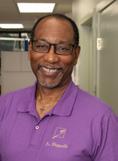
DR. EDWARD CHAPPELLE, JR., DDS
Your Bowie Dentist
3060 Mitchellville Road, Suite 107
Bowie, MD
301-390-9185
www.yourbowiedentist.com
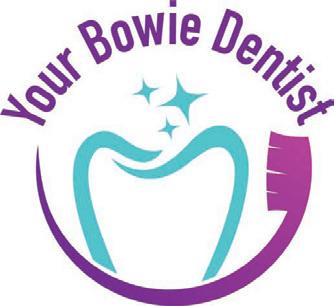
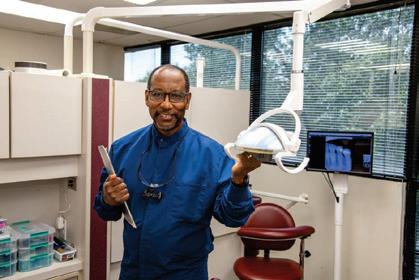



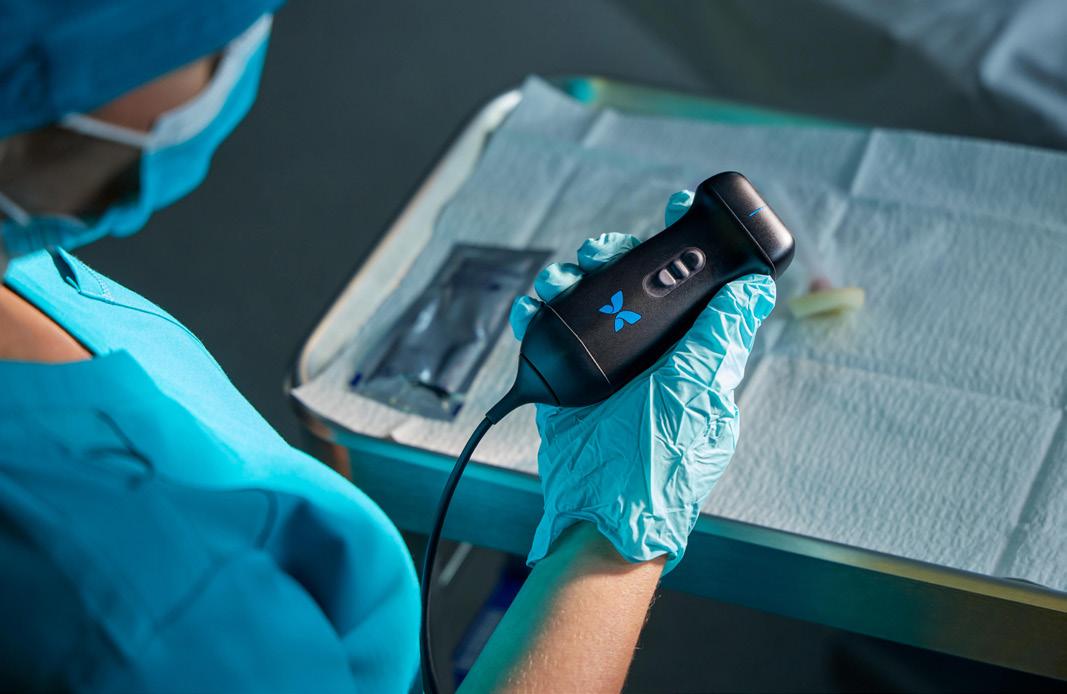
In the dynamic world of medical technology, few advancements hold as much promise for enhancing patient care as Butterfly Network’s handheld ultrasound devices.
At the helm of the clinical leadership is Dr. John Martin, MD, MBA, FACS, Chief Medical Officer, whose journey with Butterfly Network is almost as inspiring as the technology itself.
| Discovering Butterfly Network
Dr. Martin’s connection to Butterfly Network began as head of The Heart Health Foundation, Dare to C.A.R.E. program. Through the program he had a partnership with Medtronic, who discovered a small company in Guilford, Connecticut, that was exploring a cost-effective method for detecting abdominal aortic aneurysms (AAA).
Dr. Martin and Medtronic were invited to attend a meeting in New York as the Butterfly Network team, led by Dr. Jonathan Rothberg, presented their product and vision. Dr. Martin, seated quietly at the back, was captivated by the potential of this new device.
Seeing the potential for the device Dr. Martin stood up pulled out his wallet and said, “I’ll buy one right here and right now.’” Shortly thereafter, the company called and asked if he would join Butterfly Network as Chief Medical Officer to finish development, get through FDA, begin commercial release and help build the company.
| The Revolutionary Product Ultrasound technology has been around for over five decades, but Butterfly Network has introduced a handheld ultrasound device that transforms imaging delivery.
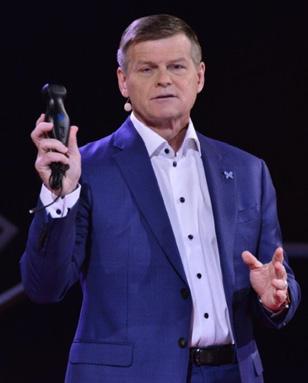
DR. JOHN MARTIN , MD, MBA, FACS, Chief Medical Officer
Traditionally, ultrasound machines relied on piezoelectric crystals, requiring various sizes and shapes for different body scans, which made them bulky and costly.
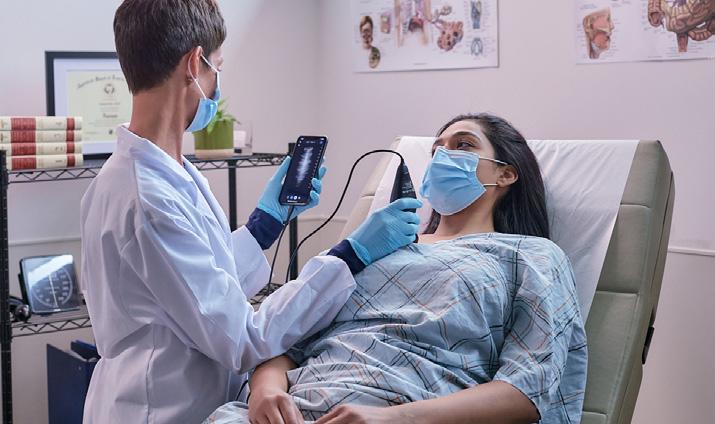
“What we’ve done is put ultrasound on a chip,” Dr. Martin explained. This innovation allows a single probe, containing thousands of elements, to scan the entire body. With devices starting under $3,000, this device is significantly more affordable, portable, and versatile.”
The implications of this technology are significant. Traditional imaging often leads to long wait times for scans and results, delaying diagnoses and treatments. With Butterfly’s device, doctors can perform ultrasounds at the bedside, providing immediate answers to urgent medical queries. “Instead of waiting for a technician, the physician can do it right there,” Dr. Martin emphasized, especially crucial in emergencies.
Dr. Martin noted that two-thirds of the world still lacks access to medical imaging. In collaboration with the Gates Foundation, Butterfly Network distributed 500 probes in
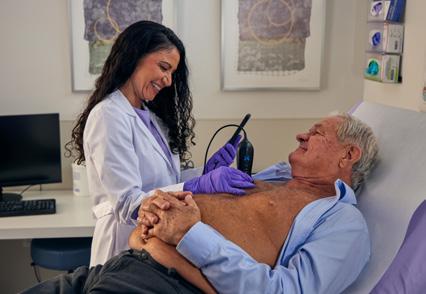
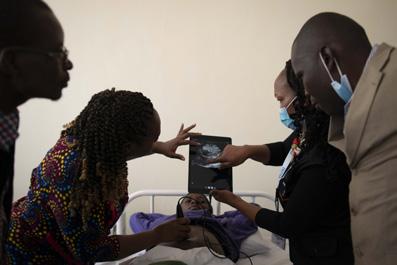
Kenya and 500 in South Africa. In Kenya, after training nurse midwives, over 90% identified at least one life-threatening condition within 30 days. Furthermore, studies show that point-of-care ultrasounds can change medical decision-making in up to 50% of cases, allowing for quicker identification of conditions like gallstones or aortic aneurysms, leading to faster treatment and improved healthcare outcomes.
Dr. Martin’s relationship with technology is personal. After discovering a small lymph node in his neck, he utilized the device he championed to scan himself, humorously dubbing himself “patient number one.” This experience highlighted the importance of accessibility in healthcare, demonstrating how technology can empower both physicians and patients for timely intervention.
“Once you become a patient, you appreciate the role of technology in addressing urgent healthcare needs,” Dr. Martin remarked, stressing the need to improve efficiency, cost, and timeliness in healthcare.
Butterfly Network’s ultrasound device excels not only in portability and affordability but also in democratizing access to ultrasound technology. In settings where traditional imaging is either unavailable or impractical,
such as rural clinics or emergency departments, this device can deliver critical diagnostic capabilities.
By reducing reliance on expensive imaging methods like CT scans and MRIs in certain cases, Butterfly Network contributes to a more sustainable and cost-effective healthcare system. “It’s a more limited exam, which is actually more cost-effective than a complex answer,” Dr. Martin pointed out. The device’s versatility makes it suitable for a range of care environments where ultrasounds were previously inaccessible.
Historically, doctors faced a diagnostic challenge when patients arrived at emergency rooms or urgent care centers without clear indications of their conditions. Traditional methods often left physicians uncertain. With point-of-care ultrasound, doctors can quickly assess patients, leading to more accurate and efficient diagnoses, allowing for faster treatment initiation.
Dr. John Martin’s vision for Butterfly Network aims to revolutionize healthcare delivery. By making ultrasound technology more accessible, affordable, and efficient, Butterfly is not only transforming diagnostic practices but also enhancing patient care overall. As the healthcare landscape evolves, innovations like those at Butterfly Network demonstrate the power of technology to improve lives and outcomes, one scan at a time.

Hearing loss is often called the invisible disability—unseen but deeply felt. It can affect anyone, from newborns just beginning to discover the world to seniors hoping to stay connected with loved ones. Despite its prevalence, hearing loss frequently goes untreated, leading to isolation, cognitive decline, and a diminished quality of life.
In Maryland and across the U.S., this silent issue touches millions. While the statistics speak volumes, the real impact is found in everyday moments missed—conversations, laughter, music, and connection.
Hearing loss affects nearly 15 percent of adults in Maryland, with the risk increasing significantly with age—nearly 60 percent of adults over 70 experience hearing challenges, yet only a fraction use hearing aids, according to data from Johns Hopkins University and the CDC.
Hearing loss is often perceived as a condition that comes with age, but in reality, it can affect anyone—regardless of life stage or lifestyle. While age-related hearing loss is common, genetics, trauma, noise exposure, and underlying medical conditions can all play a role. From newborns to centenarians, no group is immune.
Left untreated, hearing loss is far more than an inconvenience. It can significantly impact a person’s physical and emotional well-being. A study from John Hopkins Medicine revealed a strong link between untreated hearing loss and cognitive decline, including memory issues and an increased risk of dementia.
Social isolation is another major concern, as individuals may withdraw from conversations and daily interactions out of frustration or embarrassment. Additionally, hearing loss has been associated with a higher risk of falls due to reduced environmental awareness and balance control.
“In a perfect world people would understand the correlation between hearing loss and other medical conditions and would incorporate hearing testing as part of their overall healthcare routine,” said Dr. Rebecca Jahed, Clinical Audiologist and founder of Freedom Hearing Center, a full-service audiology clinic in Maryland.
“By identifying and treating hearing loss when appropriate, you’re helping to maintain the integrity of the inner ear and the auditory nerve as well as reducing your risk of falling and reducing your risk of developing dementia.”
Two common health conditions—diabetes and hypertension—have also been closely tied to hearing loss. Both affect blood flow to the tiny vessels in the inner ear, potentially leading to permanent damage over time.
These connections underscore the importance of viewing hearing loss not just as an isolated issue, but as a key component of overall health.
For many, the high cost of hearing aids— often ranging from $2,500 to $8,000 per pair—has created a major barrier to care.
Maryland’s new legislation (House Bill 1339 and Senate Bill 778) requires insurers to cover up to $1,400 per hearing aid every 36 months for adults, expanding a benefit previously limited to children.
This law, alongside recent federal approval of over-the-counter hearing aids for mild cases, marks a major step toward making hearing healthcare more affordable and accessible, however for those with Medicare or who are underinsured, significant gaps still remain.
That’s where organizations like Freedom Hearing Center step in, offering not just clinical expertise, but compassionate, personalized and affordable care for patients of all ages.
“While they did pass this law this year, we have yet to see patients with health insurance impacted by this new law. Since Medicare is not a state insurance, they do not have to provide this coverage,” said Dr. Jahed. “Medicare does cover the testing, but not the treatment or equipment for hearing loss. It would be great if all insurance plans offered an option to add hearing aid coverage.”
To help overcome these barriers, Freedom Hearing Center offers a number of flexible financing options designed to work with patients, as well as supporting donations and community organizations.
“We have a donation program where people donate hearing devices once they upgrade. These instruments can be sanitized and reprogrammed for others in need of hearing assistance,” said Dr. Jahed. “We work with the Lions Club, helping qualified patients by donating our services and fitting the person at no cost to them. We also have the Charlie Bucy Project, a raffle we run twice a year. If someone is chosen, we order whatever is appropriate—usually the top category—and fit the person, covering the services ourselves.”
Founded in 2014, Freedom Hearing Center was created to provide compassionate,
“Hearing loss is often called the invisible disability— unseen but deeply felt”
Dr.
Rebecca Jahed, Clinical Audiologist and founder of Freedom Hearing Center
patient-focused hearing care for people of all ages and backgrounds. That vision now thrives in five locations across Maryland, serving a wide and diverse population.
“Freedom is a word that may represent a different meaning to each individual person... Freedom Hearing Center embodies all three meanings—service to country, spiritual connection, and the gift of communication restored through hearing,” says Pamela McIntyre, Director of Operations for the Center. She emphasizes that it’s this philosophy that sets the tone for the center’s mission: restoring more than just sound, but a sense of freedom, dignity, and connection.
Freedom Hearing Center offers a comprehensive range of services—from newborn hearing screenings to advanced cochlear implant evaluations and tinnitus treatments. The team prides itself on staying up to date with the latest technology and training, ensuring patients receive the best possible care.
Despite recent progress in legislation and the growing availability of over-the-counter options, there is still a widespread lack of awareness about the importance of hearing health. Many people wait years before seeking help, often unaware of the risks associated with untreated hearing loss.
When it comes to taking charge of your hearing health, begin by booking a hearing evaluation with a trusted hearing care provider—taking action early, whether for yourself or someone you care about, can significantly improve long-term outcomes.
Take the first step by booking a test or consultation with Freedom Hearing Center today!


Prince Frederick Office 135 W. Dares Beach Road Suite 102
Prince Frederick, MD 20678 443-295-7100, Option 1
Waldorf Office
3475 Leonardtown Road Suite 102
Prince Frederick, MD 20601 443-295-7100, Option 2
Solomons Office
14090 HG Trueman Road Suite 1400
Solomons, MD 20688 443-295-7100, Option 3
Greenbelt Office
7247 Hanover Parkway Suite A
Greenbelt, MD 20770 443-295-7100, Option 5
Leonardtown Office
41660 Courthouse Drive
Suite 301
Leonardtown, MD 20650
443-295-7100, Option 4
www.freedomhearing.com

DR. REBECCA JAHED, CLINICAL AUDIOLOGIST

By Jane Arnold
I HOPE YOU NEVER HEAR THE WORDS THAT I HEARD. BUT IF YOU DO, I HOPE MY STORY WILL BRING YOU STRENGTH, COURAGE, AND HOPE. HERE’S WHAT HAPPENED TO ME.
Unexpectedly, I began to have rectal bleeding. It was constant and consistent. My annual physical was scheduled just two weeks after I began to bleed. I was concerned, so I immediately told my primary care physician about my bleeding for the last two weeks.
He looked over my lab report. He said, “You’re not anemic. It’s probably hemorrhoids.”
Scanxiety is the
My husband accompanied me because he knew that I was anxious. We were called back, and the PA asked me to tell her what had prompted my visit. I described my bleeding, and I told her that I had a benign rectal polyp 15 years before. She asked if she could do a flexible sig exam, and I consented.
worry, angst, and apprehension over getting a medical test or imaging procedure, like CT or PET scans or an MRI.
Long story short, he reluctantly referred me to the board-certified colorectal surgeon that I wanted to see. I had to wait six weeks before they had an opening, and my first appointment was with his physician’s assistant. That long wait was torturous for me because the bleeding continued every day. My appointment day finally arrived.
My husband went with me to the procedure room. We were not prepared for what she told us, “You have a rectal tumor. I’ve already given our surgeon a heads-up that we need to do a colonoscopy ASAP. Be expecting cancer.” Three days later, I had a colonoscopy. The biopsy of the tumor showed cancer. The surgeon explained to us that he was ordering a CT scan of my chest, abdomen, and pelvic and a rectal MRI. My husband asked
why I had to have so many scans. The surgeon said, “To learn more about the tumor size, if lymph nodes are involved, and if her cancer has spread.”
I was about to enter the unknown world of cancer treatment and experience scanxiety for the first time. And I learned that when it comes to cancer, there is no modesty.
Scanxiety is the worry, angst, and apprehension over getting a medical test or imaging procedure, like CT or PET scans or an MRI (magnetic resonance imaging).
Cancer patients quickly learn that life-or-death decisions hinge on the results of our scans. Here are some examples:
• Staging scans — the scans when diagnosed to see if our cancer has spread to distant parts of our body.
• Response-to-treatment — the scans during treatment to see if our tumor responds to chemotherapy, immunotherapy, targeted therapy, or radiation.
• Follow-up after treatment — the scans after our treatment ends to make sure our cancer has not come back (recurred).
We met again to learn the results of my tests. Waiting for this appointment was sheer agony. My husband and I decided in advance that we would go out to lunch after this appointment. Why? So that we could sit down in a neutral location and “digest” the news over coffee and a nice lunch.
Appointment time is here and in comes the surgeon. He greets us warmly and asks how we are? It’s just a bit of chit-chat.
We meet the oncologist for the first time. She became a ray of sunshine — always upbeat, smiling, and compassionate. My husband suggested that I get a copy of my CT scans to bring with us if she wanted to see the actual images.
As we talked, she said, “I wish that I could see the actual lung scan for myself.” And I pulled the disk out of my purse. She took the disk and told us that she’d be back in a few minutes. She returned with a smile on her face and said, “I disagree with the radiologist. I believe that only the largest of the three nodules is cancerous. The other two are probably scar tissue from a previous infection. If we are aggressive, we might be able to cure you.”
My husband told me later that he could see me relax when she said those words. HOPE — yes, that is what she gave me. And I said, “Sign me up.”
Then he says, “I’m going to cut to the chase. The CT scans show that your cancer has spread to your lungs.”
My heart sinks — stage IV. The scans showed 3 nodules in my right lung.
Then he says, “You have two choices. Call hospice or fight.”
And without hesitation, I replied, “I’ll fight.”
There was no way that I was going down without a fight. I felt fine, with no pain or discomfort, and my lab results were all normal.
He helped us decide on an oncologist, and he explained that most patients have chemotherapy first to help shrink the tumor so that their surgery will be less complicated.
She laid out an initial treatment plan and told me that she would rescan me after five cycles of chemo. If my tumor shrank by about 20 %, she’d take my case to the tumor committee. Although the thought of strong chemo scared me, I was ready.
Chemo was not as bad as I thought. Scans after 5 cycles showed that my tumor was shrinking, so my case went to the tumor committee. The radiation oncologist recommended SBRT (stereotactic body radiotherapy) for the tumor in my lung and pelvic radiation to help prevent a recurrence. At the meeting, my surgeon believed that surgery after radiation might be “potentially curative.”
And so we followed the recommendations. Step-by-step, inchby-inch, and day-by-day, we followed the pathway. After surgery, I did six more cycles of mop-up chemo to help prevent a recurrence.
These words — no evidence of disease — are the words that every cancer patient yearns to hear. It’s been six years, and I have scans every six months. Fortunately, I continue to remain NED.
I tell myself, “I can’t change the results. I’ll deal with whatever comes.”
That’s all that any of us can do. With our family, friends, and faith, cancer survivors not only survive, but we learn to thrive.
By Rodney Folmar, Sr.
Every bite we take may be silently poisoning us—hidden chemicals, processed ingredients, and deceptive marketing are turning our food into a health hazard that’s contributing to a national health crisis. The United States’ annual health care expenditure is $4.5 trillion, with 90% of that going toward treating chronic conditions—many of which are directly linked to what we eat. (1)
The “big three” killers—heart disease, cancer, and diabetes— share a common thread: they are largely fueled by the American diet. More than 1 in 3 deaths in the U.S. are due to heart disease or stroke, claiming nearly 950,000 lives annually. Cancer causes over 600,000 deaths each year, with around 1.7 million Americans diagnosed annually. Meanwhile, approximately 38 million American adults have diabetes, and nearly 98 million are prediabetic.
Our nation is getting sicker, and the alarming truth is that our food choices are a major culprit. Even foods marketed as “healthy” are often revealed to be detrimental to human health.
Americans have been lulled into a false sense of security by agencies like the FDA and big corpo rations that claim to have our best interests at heart. But the reality is that the truth is slowly surfacing—our food system, from farm to table, is filled with hazards that are making us sick.
Food labels in the U.S. date back to 1850, but meaningful regulation didn’t begin until the establishment of the U.S. Department of Agriculture in 1862. The first nutrition labeling requirements were only introduced in 1973. (2,3)


Over the years, labels have evolved to include more information, creating the illusion that the government is actively protecting consumers. However, much of what we see on labels is marketing spin—terms like “organic,”

“grass-fed,” and “all-natural” are often just clever tactics designed to boost sales, not guarantee safety or health. The harsh truth is that our food is contaminated with chemicals, additives, and pesticides. Microplastics are now found in everything—from our food and water to the very air we breathe. Unfortunately, regulations meant to safeguard us often serve the interests of large corpora-
tions and powerful agricultural players. Ingredients banned in other countries are still present in many American foods, sometimes without any warnings on the label.

In the end, the pursuit of profit takes precedence over public health. While the health of the population declines, corporate profits soar.
The U.S. food supply chain is an intricate, global web that imports and exports food across borders. (4,5)
Many consumers aren’t aware that the apple they feed their child today may have been picked more than a year ago, stored with chemicals, ripened artificially, and transported across the country before reaching their grocery store.
Fast food and processed foods are even more problematic—they are laden with synthetic and modified ingredients with proven links to heart disease, cancer, and diabetes. (6) These include:
• High fructose corn syrup
• Sodium nitrate
• Artificial coloring
• Maltodextrin
• MSG
• Artificial flavoring
• Hydrolyzed proteins

"Many consumers aren’t aware that the apple they feed their child today may have been picked more than a year ago, stored with chemicals, ripened artificially, and transported across the country before reaching the store."
• Artificial sweeteners like aspartame and sucralose
• Hydrogenated oils
• Preservatives and thickeners
• Gelling, foaming, and bulking agents
• Added sugar or salt
• High sodium
These foods are often oversized, both in portion and in harmful ingredients, creating a perfect storm that fuels the obesity epidemic and many chronic illnesses.
You might wonder: why are chemicals proven to cause cancer even allowed in our food? How can companies get away with this? The answer lies in legal loopholes. The FDA clas-

sifies many ingredients as “generally recognized as safe” (GRAS), giving food manufacturers significant leeway to include potentially harmful substances. (7,8)
Despite being regarded as a watchdog, the FDA’s regulations are not as strict as consumers believe. Many additives banned in other countries—such as the UK—are still used in the U.S. without warning. For years, food safety advocates have sounded alarms, but change has been slow.
There was a time when food was just food. You dug it out of the ground, plucked it from a tree, or slaughtered an animal, and the farm-to-table process took hours, not months.
But as progress often does, people got busier. TV dinners appeared in an effort to make food prep faster and easier. Over time, more chemicals had to be added to extend the life of the product while enhancing its flavor and appearance.
Now we have “food” on store shelves that is nothing more than an intricate design of those synthetic ingredients and chemicals. Most fast food and highly processed foods aren’t really food at all.
In an effort to produce more food faster, there were major changes in agricultural practices and food processing. Of course, the crux of it all was the almighty dollar. There had to be a profit, and corporations figured heavily into the equation.
The alarming thing is that this happened so slowly that most people didn’t even notice until it was almost completely upon us. By that time, most of the nation was addicted to all those synthetic, unhealthy ingredients and had forgotten what real food even is.
Heart disease, cancer, and diabetes are the top three causes of death in the United States. They are all chronic conditions – and they are all related to lifestyle.
There are four major risk factors for chronic diseases that make them almost completely preventable (9)
• Tobacco use
• Physical inactivity
• Excessive alcohol use
• Poor nutrition
Obesity is often a comorbid of these conditions and is itself also recognized as a chronic illness caused by malnutrition. The nutritional deficiencies in the obese person’s diet often lead to the condition. On a global scale, there are more overweight and obese people than there are underweight people in every region, except for Asia and sub-Saharan Africa (10)
Cancer, Diabetes, Obesity, and other chronic diseases are on the rise due to individual lifestyle behaviors, but experts say that environmental and socioeconomic factors also have a role in this. Canada and Europe, where food regulations are stricter, have lower obesity rates and chronic health conditions (12) .
The impacts of these health con ditions are far-reaching, leading to an uptick in mental health issues, including depression, anxiety, and social isolation.
In the end, it’s all about profit. food companies employ slick marketing agencies that convey care and concern for your health and the health of your family. The truth is, it’s all about money.
There are mountains of studies and reports linking these ingredients to cancer, heart disease, high blood pressure, and more. The science says your food will kill you, but these corporations quietly sweep it under the rug and carry on like everything is fine.
Everything is not fine, though, and the chronic illnesses that once were mostly confined to adults are now affecting our children.
The marketing tactics of these companies to promote their unhealthy “foods” target the groups most vulnerable – children and low-income communities.
Make no mistake, these corporations know exactly what they are doing - and they do it with the backing and support of the FDA.
Maybe we can’t control everything that is out in our food.
But we can control the knowledge of what we are putting into our bodies. We can demand higher standards, and that can start with something as simple as refusing to purchase the toxic treats that companies pass off as food. It’s clear that those who claim to be looking out for us are only looking out for their wallets. Be smart about what you eat. Know what you are reading on that ingredient list and know when to leave a product on the shelf because it isn’t worth the risk to your health.

The profit-driven motives of food companies and agriculturally associated corporations lead to the prioritization of cost over health. The fact that they are loading our food with synthetic ingredients, many of which are known to cause health problems, is a clear indication of where their concern truly lies.
Of course, fresh is best. Choosing fresh, organic fruits and vegetables, locally grown if possible, and lean meats from reputable companies is a good start. The closer to home that your food is sourced, the better off you will be.
It’s time to start addressing food supply issues for public health. You have more power than you know. Write to your local politicians, advocating for better food policies. Shop local to support local agriculture. Educate yourself so that you can make informed dietary choices for yourself and your family.
1. Fast Facts: Health and Economic Costs of Chronic Conditions | Chronic Disease | CDC
2. A Century of Ensuring Safe Foods and Cosmetics
3. Overview of Nutrition Labeling in the United States and Canada - Dietary Reference Intakes - NCBI Bookshelf
4. The first map of America's food supply chain is mind-boggling - Fast Company
5. U.S. Food System Factsheet | Center for Sustainable Systems
6. Key ingredients to avoid in ultra-processed foods - Mayo Clinic Press
7. EWG’s Dirty Dozen Guide to Food Chemicals: The top 12 to avoid | Environmental Working Group
8. Generally Recognized as Safe (GRAS) | FDA
9. The Burden of Chronic Disease
10. Malnutrition
11. The Burden of Chronic Disease - PMC
12. How has the burden of chronic diseases in the U.S. and peer nations changed over time? - Peterson-KFF Health System Tracker
Across Maryland—from the semi-rural city of Hagerstown, through the bustling streets of Baltimore, to the coastal communities of Salisbury—residents are carrying an invisible weight. Rising anxiety, economic instability, job loss, growing waitlists for therapy, and daily stressors are surfacing in ways that are hard to ignore. For many, the uncertainty isn’t just personal—it’s systemic.
POLICY SHIFTS & LAYOFFS
DEEPEN MARYLAND’S MENTAL
HEALTH STRAIN
Mental health professionals across the state describe what feels like a slow-building crisis. As one therapist put it, we’re living in a “perfect storm” where policy decisions made miles away are rippling through homes and workplaces. Federal layoffs, economic instability, and questions around healthcare access have left many Marylanders asking: What happens next?

There are 2.22M federal workers across the U.S., 144,000 are located in Maryland making it one of the highest per capita states. To date more than 121,361 federal workers from more than 30 agencies including Department of Education, HUD, Center For Disease Control, FDA, Veterans Affairs and others have been terminated. Add to that additional workforce reductions, elimination of certain agencies, cancellation of government contracts and deadline for Fork in the Road
Offers and early retirement, many of these workers are living under a constant cloud of uncertainty.
"We're seeing the effects of policy changes made in D.C.—the job insecurities, the ‘what ifs’ of what's going to happen or not happen. Individual families are being hit hard, especially financially," said Matthew Cape, LMSW, Mental Health Therapist of Healthy Lives Maryland, an organization that provides mental health and substance use services—like therapy, rehab, and transitional support—to individuals across Maryland.

“We get so used to carrying emotional weight that we start believing it’s normal. But it’s not.”
“If one federal worker in a household loses their job, that stress becomes a silo—and the other partner is just trying not to fall apart under the weight of uncertainty.”
This stress can show up as sleepless nights, strained relationships, and the quiet fear of what tomorrow might bring. For many Marylanders, the mounting pressure is finally pushing them to seek support—but even that isn’t simple. With long waitlists and limited access to care, getting help often feels just out of reach.
Even as more people begin to seek help, the systems meant to support them are shifting—putting vital resources like teletherapy on uncertain ground. “We're already in a situation where mental health and medical providers are backed up—add mass layoffs, and now the wait is three or four months instead of two. It’s the perfect storm.”
According to a 2022 report from KFF, a nonpartisan nonprofit focused on health policy, 30.3% of Maryland adults who reported symptoms of anxiety or depression said they needed counseling or therapy but didn’t receive it within four weeks.
With mental health needs continuing to climb, especially in the wake of recent economic uncertainty, access to consistent therapy is more essential than ever. But for many Marylanders, access to care is at risk—not because they lack the technology or
the willingness to get help, but because insurance coverage is disappearing. Major providers like Aetna are cutting telehealth benefits on certain plans, and even Medicare is expected to scale back coverage for some virtual services.
Telehealth, which became a lifeline during the pandemic, remains a critical tool for reaching clients in both rural and urban areas. When lawmakers quietly fold restrictions into broader budget or infrastructure legislation, entire communities lose access without ever realizing what was at stake.
“Everybody has a phone—but not everybody has an insurance provider who will continue covering telehealth.”
For clients in underserved areas—who may lack reliable transportation, child care, or the ability to take time off work—telehealth isn’t just a convenience. It’s often their only viable option. Cutting off coverage doesn’t just mean fewer appointments; it can mean no appointments at all.
Without it, the consequences are real: fewer people reaching out, more untreated anxiety and depression, and a widening gap between those who need help and those who can access it.
Before therapy was ever a calendar appointment or a co-pay, healing happened in the everyday spaces where people felt seen. It looked like Friday night dinners with a chosen family. It sounded like

porch conversations after church, or venting sessions in the car outside a thrift store. And it felt like safety.
In communities where mental health was rarely named, connection filled in the gaps. These informal networks—grandmothers who listened without interrupting, barbers who offered advice with a side of humor—helped people navigate life’s hardest seasons. There was power in knowing you weren’t alone, even if no one ever said the words “anxiety” or “depression.”
“Whether it’s therapy or just talking with someone you trust, it’s good to talk. That’s how communities heal…That was therapy,” Cape said.
But when COVID hit, many of those everyday spaces of comfort and connection disappeared almost overnight. The shift to remote work, virtual classrooms, and social distancing fractured the natural rhythms of community. Isolation replaced routine meetups, and for many, especially elders and single adults, the loss of face-to-face connection came with a steep emotional toll. People were grieving—not just loved ones, but rituals, support systems, and the ease of spontaneous conversation.
The places that once offered casual, unspoken support were now screens and silence. In the vacuum left behind, the need for intentional mental health care became impossible to ignore.
Today, as professional therapy becomes more visible and accessible, it’s important to remember that healing doesn’t have to look one way. It can start in a clinic or a text thread. What matters is intention—vulnerability, empathy, the courage to speak honestly and the willingness to listen without judgment.
But as more people begin to name their struggles out loud, those long-held stigmas are starting to shift. Slowly, cultural narratives are making room for a different definition of strength—one rooted not in silence, but in self-awareness and healing.
Seeking help doesn’t have to be dramatic. It doesn’t require a breakdown or a breaking point. In fact, the healthiest decision is often the quiet one: checking in with yourself before things boil over.
“You don’t need to be in crisis to benefit from therapy,” Cape explained. “Start small. Ask yourself: Why am I feeling this way? When did that start? What might I need? Open therapy the same way you open a shaken can of soda—cautiously, carefully, but with the expectation that the pressure will finally start to release.”
The idea that therapy is only for people in crisis is one of the most damaging myths in mental health. In reality, therapy can be preventative—a tool to understand yourself better, to manage everyday stress, to navigate change, or to unpack old wounds you didn’t even know were still affecting you.
“We don’t want tragedies to have to be the lesson. We want to stop tragedies because we’ve already learned.”

Therapy isn’t just a place. It’s an interpersonal practice. And sometimes, it begins with the people you already know and trust.
In many communities—especially among men and people of color—mental health isn’t just a medical issue. It’s a cultural one. The barriers aren’t always financial or logistical, but emotional and often rooted in deep, unspoken beliefs about what strength is supposed to look like.
“I think about that man, the one sitting in his car, full of anxiety and stress. He hasn’t reached the therapist yet. He might not even know he needs to,” said Cape. For men especially, acknowledging emotional pain can feel like a violation of unwritten rules: don’t cry, don’t complain, don’t ask for help. “Man up” culture teaches people to bury pain so deeply they stop recognizing it as pain at all.
What often holds people back from seeking help is the fear that a therapist will know too much, judge them, or misunderstand them.
If you don’t know where to start, you’re not alone.
Begin by talking to your primary care doctor. Call 211 for local mental health resources, or 988 for crisis support. Reach out to community centers, churches, or nonprofits in your area—many now offer free or sliding-scale therapy.
“It’s okay not to be okay.”
Mental health challenges don’t always announce themselves. They look like coworkers quietly struggling to stay afloat, students who smile through stress, or neighbors carrying grief in silence. The truth is, many people are walking around with invisible weights.
“Be gracious and kind to everyone you meet—because you don’t see the invisible things they’re carrying.”
This isn’t just about individual healing. It’s about community transformation. “When we create environments where people feel safe asking for help—where they know they’ll be met with understanding instead of shame—we interrupt cycles. We break stigmas. We save lives,” said Cape.
For more information on available mental health resources, reach out to Healthy Lives Maryland to get started with a consultation.

Engaging in regular, moderate exercise is good for your heart, of course, but research shows that working out can have a positive effect on the beneficial bacteria living in your gut.
There are about 100 trillion bacteria living in your digestive system, known collectively as the gut microbiota. Some of the 5000 distinct bacterial strains living there are unhealthy and can cause illness. Other strains, known as probiotics, are good for your health.
Researchers are beginning to find out that the gut microbiota has an enormous influence on health. Harmful bacteria can cause illness, of course, but beneficial bacteria help you digest fiber, play a role in controlling your immune system, promote brain health, lower blood sugar and affect the health of your heart, gut and other organs.
To gain these benefits, though, you need to keep the beneficial bacteria living in your gut microbiome healthy. Researchers already know that you have to “feed” your bacteria with its favorite foods such as legumes, beans and fruit that contain lots of fiber, along with yogurt, sauerkraut and other fermented food foods. Feeding your bacteria can promote the growth of beneficial microbes and create a balanced micro bone.
Eating unhealthy food can negatively affect your gut microbes, taking antibiotics, drinking alcohol, cigarette smoking, lack of sleep and other factors can also disrupt you, disrupt the bacteria in your digestive tract. Now, research shows that exercise alone can alter the composition of your gut microbiota.
Scientists from the University of Illinois at Urbana-Campaign performed a pair of studies investigating the role exercise plays in the health of the gut, regardless of antibody use or other factors. In their first study, the researchers used three groups of lab mice. The first group exer-

cised a lot, and the second group didn't exercise any more than usual. The third group of mice, specifically bred in a storeroom, without any microbes in their gut was sedentary too.
The researchers then transferred transplanted fecal matter, material from the active and sedentary mice into the guts of the sterile mice. Recipients of the exercise mice’s microbiota intended ended up having microbes that produce butyrate, a type of short chain fatty acid (SCFA) that promotes healthy intestinal cells, decreases inflammation and generates energy for the host; these mice were also more resistant to inflammatory bowel disease.
In the second study, the researchers looked at the gut microbes of 18 lean and 14 obese, sedentary adults before the recipients entered a six-week exercise program, and again afterwards, the participants then engaged in six weeks of sedentary behavior, which the researchers looked at their gut bacteria again.
The participants maintained their normal diets throughout the study. The researchers found that fecal concentrations of SCFAs, particularly butyrate, increased in the human gut as a result of exercise. Butyrate and other short chain fatty acids decreased when the human participants stopped exercising.
The results of these studies and others show that exercise can improve the health of the microbes in your gut.
To keep your digestive tract and the rest of your body at peak performance, exercise regularly.

For more than two decades, Dr. Larry Bryant, DDS, has provided comprehensive oral and maxillofacial services to patients in the Bowie-Mitchellville region of Prince George's County, Maryland. His extensive experience includes a vast range of dental reconstruction options and oral surgery.
Dr. Bryant consistently incorporates state-of-the-art imaging, diagnostic, and restorative technologies into his practice. His devotion to modern dentistry ensures patients benefit from leading-edge solutions for complex procedures
such as full arch reconstruction and intricate wisdom teeth extractions.
Some of the most impressive advancements in dentistry involve reconstructing one or both arches using dental implants. Dr. Bryant employs TeethXpress Implant services in his practice, which allows him to replace an entire arch using four to six implants.
Dental implants act as roots that secure a custom-designed arch of prosthetic teeth. They eliminate the need for traditional dentures and messy adhesives.
Dr. Bryant and his staff use digital imaging to design the arch, providing single-day service for most patients. The technology allows customizing prosthetic teeth to give the most natural look possible.
The benefits of this approach are significant compared to traditional dentures. Using TeethXpress for fixed restoration provides unparalleled stability and enhanced function and helps preserve the jawbone. It is a long-term solution that is easy to maintain and cost-effective.

As a renowned specialist in oral surgery, Dr. Larry Bryant often receives calls from patients who need complex wisdom tooth extractions. Each year, oral surgeons remove millions of wisdom teeth around the globe.
According to Dr. Bryant, "It's common to have wisdom teeth removed because they often cause problems, including infection, gum disease, and damage to other teeth. Most mouths are too small for the four additional molars called wisdom teeth, and these teeth usually must be removed."
These removals are frequently more complex than other extractions. Impacted wisdom teeth, for example, are typical. When left in place, they can cause significant oral health issues, such as misalignments.
Impacted wisdom teeth can also partially emerge. This allows them to trap food and debris, causing inflammation and disease. It takes experience and a skilled hand to extract wisdom teeth with curved or abnormal roots, encased in bone, impacted, or in close proximity to other teeth.
Dr. Bryant is an expert at removing problematic wisdom teeth in teenagers and young adults under general anesthesia. Performing this complex surgery while the patient is asleep makes the procedure more comfortable and potentially leads to better outcomes.

Dr. Bryant graduated with honors from Howard University College of Dentistry and completed his oral and maxillofacial surgery training at Woodhull Medical and Mental Health Center in New York. He also completed a fellowship program in orthognathic surgery and dental implantology at Montefiore Medical Center in New York.
Along with seeing patients at his practice in Glenn Dale, MD, Dr. Bryant is the Chief of Facial Trauma at the University of Maryland Capital Region Medical Center in Largo. He and his skilled team are on call 24/7 to help trauma patients in need of facial reconstruction and treatment.
Once a year, Dr. Bryant joins the Smiling Surgeons team to travel to one of the poorest countries in the world—Malawi, in Africa. According to Access Health Africa, Malawi has just one oral surgeon per 1,000,000 residents. By traveling to this country, Dr. Bryant can help patients with advanced oral disease and jaw tumors.
Dr. Larry Bryant provides cutting-edge technology like TeethXpress and advanced solutions for intricate problems like wisdom tooth extractions. He is improving lives and the health of patients in the Bowie-Mitchellville area and beyond.
Bryant OMS Associates
12200 Annapolis Road, Suite 236
Glenn Dale, MD 301-249-0553
By Dr. Neal
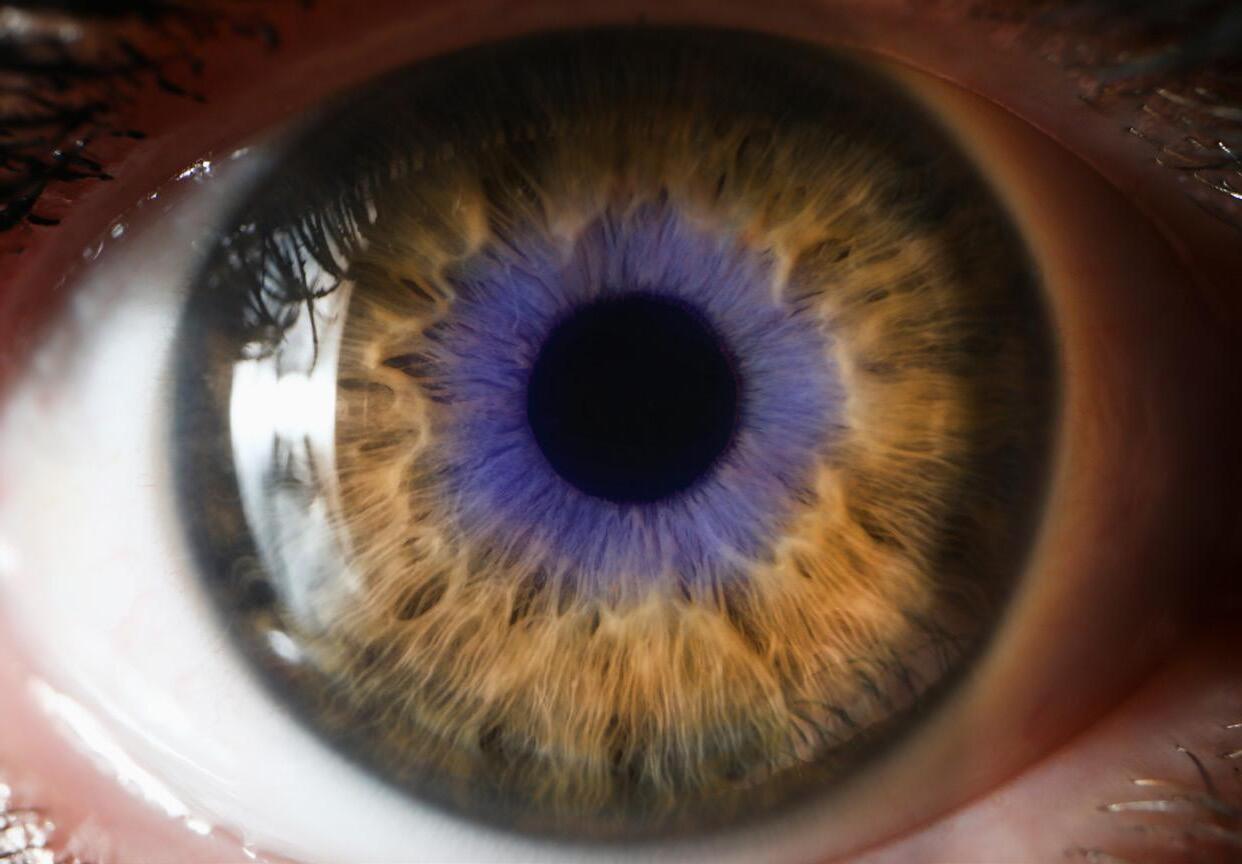
For millions of Americans suffering from chronic dry eye syndrome, relief has often felt just out of reach. But at the Dry Eye Center of Maryland, Dr. Benjamin Azman is changing lives through an innovative treatment that’s bringing hope to patients who’ve exhausted traditional options.
“Many people don’t realize how debilitating dry eye can be,” says Dr. Azman, Medical Director at the
Dry Eye Center of Maryland. “It affects every aspect of daily life – from working at a computer to simply enjoying outdoor activities.”
The treatment making waves in dry eye care is Intense Pulsed Light (IPL) therapy, a procedure that’s proving remarkably effective for many patients. While it might sound like something from a sci-fi movie, IPL therapy uses carefully calibrated light pulses to target the

Optilight IPL (Intense Pulsed Light) is an FDAapproved technology that uses pulses of light energy to treat dry eye disease. Insert near third paragragh. The paragragh that begins, “The treatment making waves in dry eye is Intense Pulsed Light (IPL)
underlying causes of dry eye syndrome, particularly in cases involving meibomian gland dysfunction.
The science behind IPL is compelling. Recent clinical studies show that 80-90% of patients experience significant improvement in their dry eye symptoms after a series of IPL treatments. The therapy works by addressing inflammation and improving the function of the oil-producing glands essential for healthy tears.

“Dry eye isn’t just an inconvenience – for many, it’s a daily struggle that impacts quality of life. But with breakthrough treatments like IPL, we’re finally able to offer real, lasting relief to patients who thought they were out of options.”
Dr. Benjamin Azman

Dr. Azman’s approach stands out because he combines IPL with comprehensive eye care. As co-director of Specialty Contact Lens Services at Azman Eye Care Specialists, he understands that each patient’s dry eye condition is unique. “We don’t just treat symptoms,” he explains. “We look at the whole picture – lifestyle, environmental factors, and underlying conditions –to create a personalized treatment plan.”
Close-up of woman using eye drops for dry eye syndrome.
The treatment process itself is surprisingly gentle. During each session, patients receive carefully controlled pulses of light around the eye area. These pulses help reduce inflammation and stimulate healthy gland function. Research published in
medical journals confirms that IPL is both safe and effective, particularly for patients with severe dry eye who haven’t found relief through conventional treatments.
For Sarah Chen, a Baltimore-based graphic designer who spent years struggling with dry eye, Dr. Azman’s IPL therapy was life-changing. “I was skeptical at first,” she admits. “But after my third treatment, I noticed I wasn’t reaching for eye drops every hour. I could finally work at my computer without constant discomfort.”
The future of dry eye treatment looks bright, quite literally.
As more eye care professionals adopt advanced technologies like IPL, Dr. Azman continues to lead the way in Maryland, combining innovative treatments with personalized care. His practice demonstrates that while dry eye syndrome remains a complex condition, new solutions are bringing relief to those who need it most.
For anyone suffering from chronic dry eye, Dr. Azman’s message is clear: don’t give up hope. With modern treatments like IPL and the right medical guidance, better eye health is within sight.


“ALWAYS
Every woman with breast cancer goes through that specific moment when she suspects something is wrong. For Cynthia Rogers, it was at age 44, in 2014, while trying on outfits in a store in preparation for a vacation.
Right there in the dressing room, she felt a lump in her breast. She had false alarms before because her breasts tended toward the cystic, but she knew this needed checking, and soon arranged for a mammography.
Her primary care physician’s urgent voicemail instructed her to see a breast specialist right away. She scheduled the appointment, but the reality still seemed distant. Then came the devastating words: “You have cancer.”
As the doctor discusses the next steps, Cynthia feels as if she's outside of herself, watching the scene unfold. Her initial instinct is to delay the biopsy, but the doctor is insistent. At this moment, the doctor explains the upcoming procedures—surgery, chemo, recovery, and rest—but overwhelmed emotionally, Cynthia struggles to fully grasp the scope and magnitude of this devastating news.
Cynthia’s diagnosis was stage two breast cancer, for which she must endure 18 months of treatment. “This disease is known to be very aggressive in women of color, our tumors tend to be more aggressive. We have a higher mortality rate from the disease than Caucasian women,” Cynthia said.
Cynthia had a lumpectomy after getting three professional opinions. After the lumpectomy, she went through eight sessions of chemotherapy scheduled every two weeks. After chemo, she started daily radiation, Monday through Friday, for six weeks.
“After radiation, my oncologist informed me about a new treatment he thought would also help me, and he recommended that I have the treatment for a year,” she said. However, this treatment, called Herceptin (trastuzumab), was tough on her body, and Cynthia was only able to tolerate it for six months.
Chemotherapy kills cancer cells and keeps the disease from recurring, but it's a difficult journey. Some women sail through the chemo experience with relatively few side effects. But she was not so lucky. The side effects affected her nerves, resulting in burning and tingling sensation in her hands and feet. Then, of
“Cancer is a blessing as well as a curse, as it can lead to development of your spiritual growth.”
course, there was losing her hair. As a woman who had always been on top of her game in terms of her appearance, losing her hair was hard.
In the midst of her chemo treatment, she went to church wearing a hat to disguise her bald head. Everyone was happy to see her, but she was overwhelmed with fear that the hat would fall off. That night, she experienced a moment of divine intervention. A major music award show was on TV, and a female artist, also undergoing chemo, was on stage confidently rocking her bald head.
“From that moment on, I felt encouraged and empowered to wear my bald
head with pride after seeing her. I wore it as a badge of honor. That was God. That's what God can do,” she said.
Eleven years have passed since Cynthia became a breast cancer survivor. Now she helps others on their journey, just as she was supported along the way. Alongside her family, who remained strong and always stood by her side, she also relied on the Prayer Warriors, her close friend Maria, and a supportive community of friends and fellow survivors.
These days, she lives life with the understanding that she must stay relentless in being physically active. She never takes life or time for granted. “I know that each day is a gift. I know that each day that I am healthy and able to get out of bed on my own and get myself to work and put in a productive day is a blessing from God,” she said.
So, what advice does Cynthia have for the thousands of women and men who find out they have breast cancer this year? “Get your tablet, get your tablets, laptops, mobile devices or pen and paper and do your research,” she said, look up the doctors you plan to see, and check out at least three facilities, if possible, where you can go for care.
Always get a second opinion, no matter how reputable your initial breast specialist is. Be selfish as you go through the cancer journey and take your well-being into your own hands. Remove yourself from toxic people and situations if you want complete healing. Cancer is a blessing as well as a curse, as it can lead to development of your spiritual growth.
Building and maintaining her spirituality is very important to her well-being. “I have a strong faith, and I am grateful to my Heavenly Father for all that he has done for me by bringing me through a life changing experience,” she said.

Undeniable Results
Uncompromising Standards
We offer a wide range of treatments and surgeries, including facial rejuvenation, body contouring, breast augmentation, and more. Whether you are looking to enhance your appearance or restore your original look, we are here to help. Contact us today to learn more about what we can do for you





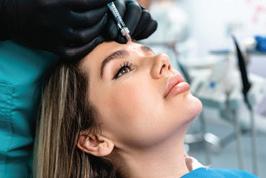
Dr. Nadya Clarke is a Board-Certified plastic surgeon who is experienced in aesthetic surgical procedures of the face, body, and breasts. She also performs an array of aesthetic non-surgical procedures.
Yoga Center of Columbia 8950 Route 108, Suite 109 Columbia, MD 21045 (410) 720-4340 info@columbiayoga.com www.columbiayoga.com
Yoga Centric 227 Gateway Drive, Unit A Bel Air, Maryland 21014 410.838.1938 candice@yogacentricharford.com www.yogacentricharford.com
Thrive Yoga 1321 B Rockville Pike Rockville, MD 20852 (301) 294-9642 www.thriveyoga.com info@thriveyoga.com
Bikram Yoga Rockville 220 Perry Parkway Gaithersburg, MD 20877
www.bikramyogarockville.com 240-477-6688 240-780-2375 (c)
YOGA BLISS 404 Main Street 2nd Floor Gaithersburg, MD — 20878 Text: (202)-819-4136 Hello@YogaBlissStudios.com www.yogablissstudios.com
Extend Yoga 12106 Wilkins Avenue North Bethesda, MD 20852 301-881-3330 hello@extendyoga.com www.extendyoga.com
Spiritual Essence Yoga 5080 Brown Road #255 Upper Marlboro, MD 20772 (301) 574-FLOW(3569) hello@spiritualessenceyoga.com www.spiritualessenceyoga.com
Baltimore Hot Yoga & Wellness 9512 Harford Road #1 Parkville, MD 21234 410-665-YOGA (9642) info@baltimorehotyogaandwellness.com www.baltimorehotyogaandwellness.com
Yoga Factory Annapolis 1901 West St Annapolis, MD. 21401 Yoga Factory Crofton 1119 MD-3 Gambrills, MD 21054 410-533-1908 yogafactorymaryland@gmail.com www.yogafactoryannapolis.com
Yogi Smile Yoga & Wellness Center 417 Main Street Laurel, MD 20707
Resistance Cycle 1324 Point Street Baltimore, MD 21231 443-438-6773 resistancecycle@gmail.com www.resistancecycle.com
REV Cycle Studio 700 Toone Street Baltimore, MD 21224 410) 342-3300 www.revuup.com info@revuup.com
Amean Spinn Indoor Cycling (Upper Level) 11222 Grandview Ave #7
Silver Spring Md 20902 240-343-4897 info@ameanspinn.com
TRIBE INDOOR CYCLING 890 Bestgate Rd. Annapolis, MD 21401 443-808-1234 1718 Whetstone Way Baltimore MD 21230 410-600-3507 www.tribecycle.com info@tribecycle.com
Club and Cycle 7130 Ambassador Road Windsor Mill, MD 21244
443-551-3325 www.clubandcycle.com info@clubandcycle.com CYCLED STUDIOS
Takoma Park 6960 C Maple Street NW Washington, DC 20012 240.641.4969 www.cycledstudios.com info@CYCLEDstudios.com
SOUL CYCLE 4931 Elm STREET Bethesda,MD 20814 301.803.7685 soulbethesda@soul-cycle.com
240-621-0304 info@yogismile.com www.yogismile.com
Grace Studios 8435 Georgia Avenue, Second Floor Silver Spring, MD. 20910 301-655-0110 info@graceyps.com www.graceyps.com
PureFire Yoga 7819 Norfolk Avenue Bethesda, MD 20814 www.purefireyoga.com
Shabach Yoga 3082 Waldorf Market Place Waldorf, MD 20603 240-774-1521 www.shabachyoga.com


LifeCYCLE Studio 470-C Prospect Blvd. Frederick, MD 21701 240-815-6979 www.lifecyclestudio.com info@lifecyclestudio.com
SENZ 14925 Shady Grove Road Unit A Rockville, MD 20850 301-762-SENZ (7369) https://senz.life info@senz.life
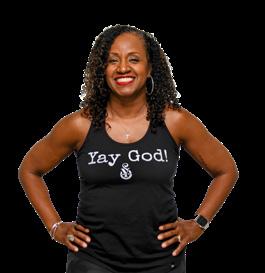
DMV IRON 1776 E Jefferson Street #103 Rockville MD www.dmvirongym.com/rockville info@dmvirongym.com
Powerhouse Gym 7476 New Ridge Road Hanover, MD. 21076 410-691-1590 www.powerhousehanovermd.com
Sanctuary Gym 901 Brightseat Road Hyattsville, MD. 20785 301-541-3769 www.sanctuarygym.net
Foundation Fitness 2006 Industrial Drive Annapolis, MD 21401 410-266-3366 annapolis@foundfit.com www.foundfitpt.com/gyms/ annapolis
PURE FITNESS 8271 Gateway Overlook Drive Elkridge, MD. 21075 www.purefitness.com/gyms/ columbia-md/
Chiseled Life Gym 9309 Snowden River Pkwy Suite A Columbia, MD, 21046 (443) 542-9859
info.chiseledlife@gmail.com www.chiseled-life.com
Life Time Columbia 7220 Lee DeForest Drive Columbia, MD 21046 410-953-0022 www.lifetime.life
COLOSSEUM GYM 9159F Red Branch Road Columbia MD 21045 410-740-2339 www.colosseumgym.com
WORK OUT ANYTIME Enterprise Plaza 9363 Annapolis Road Lanham, MD 20706
301-456-0944 www.workoutanytime.com/ lanham/
Her Flex Fitness 7794 Marlboro Pike Forestville, MD, USA 20747 310-969-4429 www.herflexfitness.net herflexfitness@gmail.com
EDGEWATER FITNESS 5 mayo Road Edgewater, MD 21037 www.edgewaterfit.com 410-956-9392
Fitness Evolution 3541 Fort Meade Road
Laurel, MD 20724 301-490-5050 www.fitnessevolution.com
We offer a sanctuary where faith and wellness unite, empowering you to achieve holistic healing through yoga, Reiki, vibrational sound therapy, and meditation practices, all offered from a Christian perspective. We are dedicated to helping you deepen your spiritual journey while enhancing your physical and mental well-being in a supportive, safe environment in Waldorf, MD.
CrossFit 91 Mellor Avenue Catonsville, MD 21228 410-770-2470 www.crossfit-catonsville.com
CrossFit 795 3706 Crondall Lane Suite 102 Owings Mills, MD 21117 410-650-2505 michael.t@crossfit795.com www.crossfit795.com
Townson Fitness 909-B York Road Townson, MD 21204 443-470-9752 darin@crossfittowson.net www.crossfittowson.net
Crossfit Enforce 7851 Beechcraft Avenue Gaithersburg, MD. 20879 240-813-8066 info@crossfitenforce.com www.crossfitenforce.com
PERRY HALL CROSSFIT 10521 Industrial Park Rd White Marsh, MD 21162 443-489-6575 www.perryhallcrossfit.com
CrossFit Revamped 9385 Washington Blvd. Suite B-C Laurel, MD 20723 570-575-0756 www.revamped.fitness
GROUNDED CROSSFIT 7476 New Ridge Road F Hanover, MD 21076
301-351-9860 patrick@groundedcrossfit.com www.groundedcrossfit.com
TRUE CORE Bay 4 1981 Moreland Pkwy #3B Annapolis, MD 21401 443-727-1589
CROSSFIT INNER LOOP 8800 Monard Drive Silver Spring, MD 20910 240-670-7836 www.crossfitinnerloop.com

Shabach Yoga 3082 Waldorf Market Place Waldorf, MD 20603 240-774-1521 www.shabachyoga.com
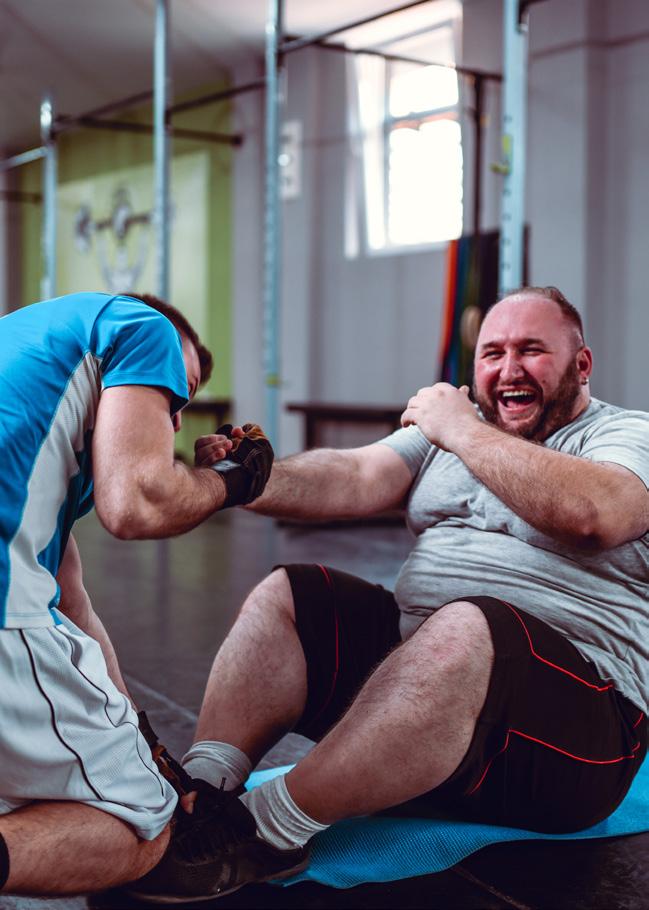
In today’s health-conscious society, many individuals are faced with the question, “Do I need a personal trainer?” Whether you’re a fitness novice or a seasoned athlete, the benefits of working with a qualified trainer can be significant, impacting not just your physical appearance but also your overall well-being.
Personal trainers serve as guides on your fitness journey, bringing a wealth of knowledge and expertise to the table. They are trained professionals who understand the intricacies of exercise programming, nutrition, and human physiology. A well-structured workout plan, crafted by a personal trainer, can help you achieve your goals more efficiently. According to the National Strength and Conditioning Association (NSCA), a tailored program designed specifically for you can lead to faster results, minimizing the trial and error that often accompanies personal fitness endeavors.
One of the primary reasons to consider a personal trainer is motivation. Many individuals struggle with self-discipline when it comes to exercise. A personal trainer provides accountability and encouragement, which can be crucial for maintaining consistency. As Alex Howe, a personal trainer at Colosseum Gym, explains, “As a personal trainer, I look at where someone started, their activity, I give them new programming each week. I ask what do we have to do to take them where they want to go.” This external support can help you overcome mental barriers that may hinder your progress.
Moreover, personal trainers can offer a fresh perspective on your workouts. If you’ve been following the same routine for a while, you might find yourself plateauing or losing interest. Trainers can introduce new exercises and techniques that not only prevent boredom but also challenge your body in different ways. This variety is essential for continued improvement and can help you avoid the dreaded workout burnout.
Another critical factor to consider is safety. Exercise, when performed incorrectly, can lead to injuries. Personal trainers are trained to teach proper form and technique, ensuring that you perform exercises safely and effectively. This is particularly important for beginners or those returning to fitness after an injury.
Equally important to your fitness journey is your diet. As Kenneth Reed, owner of Fit For Life Personal Training, emphasizes, “Eat right, Keep It Tight and have a salad tonight.” Your nutritional choices directly impact your progress in the gym. You can’t out-train a bad diet; no matter how hard you work out, poor eating habits can undermine your efforts. A personal trainer can guide you in making healthier food choices that align with your fitness goals, helping you create a balanced lifestyle that extends beyond workouts.
For individuals with specific goals, such as training for a marathon or recovering from an injury, a personal trainer can provide specialized knowledge and customized programs. They can assess your current fitness level and create a structured plan that aligns with your aspirations, whether that’s improving strength, enhancing endurance, or preparing for a specific event.
When selecting a personal trainer, it’s essential to consider their credentials and experience. Look for trainers with certifications from recognized organizations, such as the American Council on Exercise (ACE) or the International Sports Sciences Association (ISSA). Additionally, a trainer with experience in your area of interest can provide targeted guidance that aligns with your goals.
In conclusion, while hiring a personal trainer is not a necessity for everyone, it can be a game-changer for those seeking to enhance their fitness journey. The combination of personalized training, motivation, safety, and expertise can lead to significant improvements in both physical and mental health.
If you find yourself struggling to achieve your fitness goals or simply want to make the most of your workouts, investing in a personal trainer may be a decision worth considering. As Alex Howe puts it, “Typical retirement age is 65, average life span is in the high 80's. If you want to get to that late 80's stage you better start working out.”



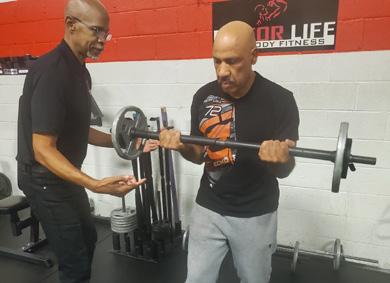

Starting a business is rarely a straight path, and for Chayla Brown, the journey was anything but predictable.
By Daine Taylor
Her path to health, fitness and self-discovery was a deeply personal one. As a child, she was active and loved sports, but after 23 years of marriage and becoming a mother of three, her focus shifted entirely to her family. Over time, she lost sight of herself, her confidence declined, and she fell into a cycle of self-neglect. She found herself avoiding certain clothes, struggling with her weight, and feeling disconnected from the vibrant person she once was.
At 360 pounds, reality hit hard—she couldn’t even run with her children. She became fixated on weight-loss shows, longing for a change but unsure how to begin.
| Inspired by a Mother’s Love
The turning point came when she confided in her mother Laverne Dixon, admitting despite constant support from her husband, she no longer felt beautiful. In response, her mother, a steadfast source of encouragement, vowed to help her, even offering to pay for a trainer. That moment sparked a transformation, not just physically but mentally.

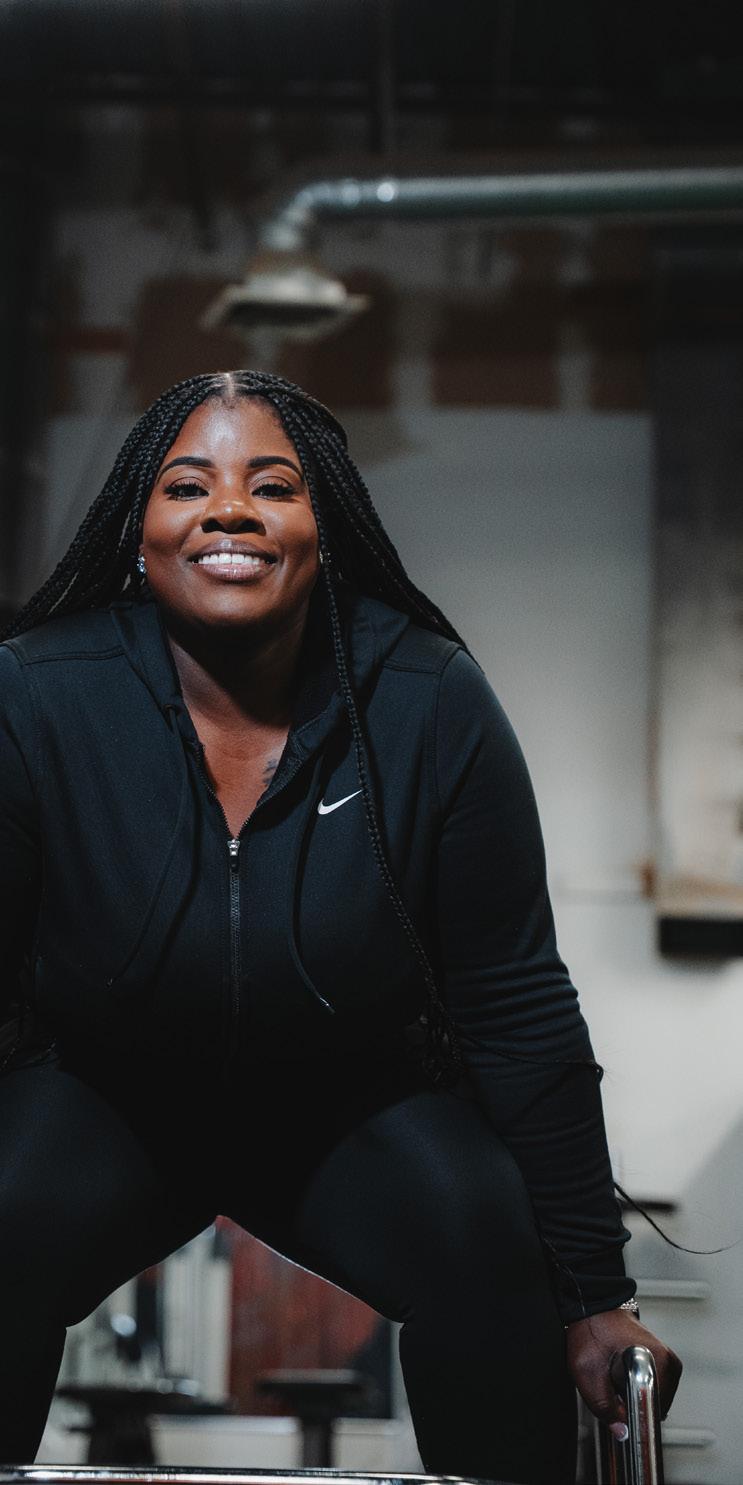
“It was a moment of clarity. I will never forget it… Everyone always says ‘you have to believe in yourself.’ I never believed in myself, but my mom never stopped [believing], never in a million years. She's still my biggest fan.”
Through hard work, dedication, and self-belief, Brown rebuilt herself over the course of six years. Now at about 165 pounds, she is committed to guiding other women through their own journeys. Her gym, Forever Fit Moms, isn’t just about fitness—it’s about reclaiming confidence, finding strength, and building a supportive community for women like her.
Her journey began with a single person, her long-time friend Shawnetta Layton, who saw her impressive progress and requested some personal training. Chayla trained her in her basement and after seeing improved results the idea sparked to expand her services to others.
This transition from a small basement operation to a full-fledged business was not initially planned. "It's so funny because, literally, this was not my plan. I had no idea I would do this. I started with one person. After that, I got so excited I opened the gym."
With a leap of faith, Brown committed wholeheartedly to the idea of building a safe space for women who wanted to take charge of their physical and nutritional health.
"I literally just jumped in. I started out storing gym equipment in my living room and basement, and with the help of my husband Marc we brought my vision to life. I had no one when I opened the gym, I did everything myself."

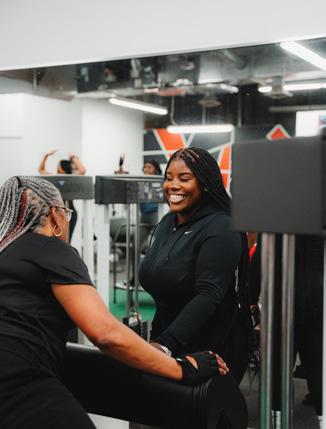

From these humble beginnings, she now has 50 dedicated patrons and counting, and is currently looking to expand her business with a larger facility, trained staff, and new fitness and nutritional offerings.
| How Forever Fit Moms Grew Into a Community Pillar
Brown reflected on how she felt inspired to create a space where women of all ages and weights could work on themselves without judgement and surrounded by support. From that singular goal, her business flourished. "I used to walk into major gyms and feel like people were watching me. I’d be so scared to get on the machines, thinking somebody was looking at me. So I built this space where we’re all here for the same thing. No makeup, no pressure—just come as yourself.”
She recalls one particular experience that reaffirmed the mission behind the gym. She recalls the day Leatonya Marner came in — I’ll never forget it. She was about 200 and something pounds when she walked in the door, and she was so quiet. She said, ‘Hi I need some assistance. I see that it says “moms” out here, and I need help.’”



“I questioned myself, I doubted myself, but I just said, ‘Let’s go.’ And now, I look around, and people have found me.”
Chayla Brown, Founder of Forever Fit Moms
Brown welcomed her with open arms, eager to prove the impact of her training. Over time, their bond grew stronger, and she became her brand ambassador. “She was the first person to walk into my gym when I found it. She stuck with me through it all.” Through hard work and perseverance, she lost over 55 pounds. Even after suffering a serious ankle injury, she remained committed, rehabilitating with Brown’s guidance.
At first, she wasn’t sure if people would take notice, but her husband reassured her that they would—and he was right. Before she knew it, women were knocking on her door, eager to join. Wanting to go beyond fitness, she started incorporating special events, including healthy meal demonstrations and even catering to teach clients how to make nutritious choices fun and enjoyable.
"I don’t believe in extreme nutritional restrictions. I keep things realistic because when you take everything away, people fail. I adjust things gradually. Clients even send me pictures of their meals, and I help them make better choices. I always say, ‘If you’re out to eat and can’t decide, send me a picture, and I’ll help you out.’ That’s the purpose of this community."
Reflecting on her journey, Brown is proud of the community she’s built. "I questioned myself, I doubted myself, but I just said, ‘Let’s go.’ And now, I look around, and people have found me. They come, they stay, and they support each other. That’s what this is all about."
For those interested, Forever Fit Moms of Reisterstown, Maryland offers a number of flexible options. You can purchase a standalone meal plan for $30 or sign up for training packages based on how many days per week you train—two, three or four days. Drop-in sessions are $30 per hour.
Get started taking your health into your own hands!

AS A MOTHER, YOU DEDICATE SO MUCH OF YOURSELF TO CARING FOR YOUR FAMILY—PUTTING EVERYONE ELSE’S NEEDS FIRST. YOUR DAYS ARE FILLED WITH BALANCING WORK, HOUSEHOLD CHORES, CHILDREN’S ACTIVITIES, AND ENDLESS RESPONSIBILITIES. WHILE IT’S ADMIRABLE AND FULFILLING, IT’S ALSO EASY TO FORGET ABOUT YOUR OWN NEEDS.
here’s no shame in taking time for yourself. Prioritizing your well-being is not only beneficial for you but also for your family. A “Mommy Makeover” is a wonderful way to refresh and rejuvenate, helping you feel more confident, energized, and happy.
| Why It’s Important to Prioritize Yourself
Many women believe that their primary role is to serve others, often putting their own desires and needs on the back burner. This self-sacrifice is admirable, but over time, it can lead to exhaustion, stress, and health issues. When you neglect your own well-being, it can affect your mood, self-esteem, and overall quality of life.
Taking time for yourself isn’t self-
ish—it’s essential. Whether it’s setting aside moments for meditation, engaging in regular exercise, planning date nights with your partner, or spending time with friends, these activities nourish your mind and body. They help you recharge and return to your family with renewed energy and positivity.
| A Mommy Makeover: Your First Step Toward Self-Care
This year, consider making self-care a priority. A Mommy Makeover isn’t just about physical changes; it’s about restoring your confidence and well-being. It’s a personalized approach to help you feel like the best version of yourself—strong, healthy, and happy.
Many women find that focusing on their health and wellness as part of a comprehensive self-care plan can make
a significant difference. Whether you’re looking to regain your pre-baby shape, improve your fitness, or just carve out time for yourself, a Mommy Makeover can be tailored to your needs.
| Invest in Yourself
Remember, taking time for yourself is not only good for you—it’s good for your family. When you nurture your body and mind, you’re better equipped to handle life's challenges and enjoy quality moments with loved ones.
So, this year, make a commitment to prioritize your well-being. Set aside time for meditation, exercise, date nights, and connecting with friends. Embrace selfcare as an essential part of your life and watch how it transforms you and those around you.
You deserve it.

Welcome to Transformations Center for Weight Loss (TCWL). Our professional and dedicated doctor-led team is here to help you refresh your lifestyle and learn how to love your body! At TCWL, we are passionate about helping each person that walks through our door achieve lasting results that they can feel proud of. With the right tools, education, motivation, and inspiration, our enthusiastic and knowledgeable staff will provide everything you need to achieve and maintain a healthy weight for the rest of your life!












